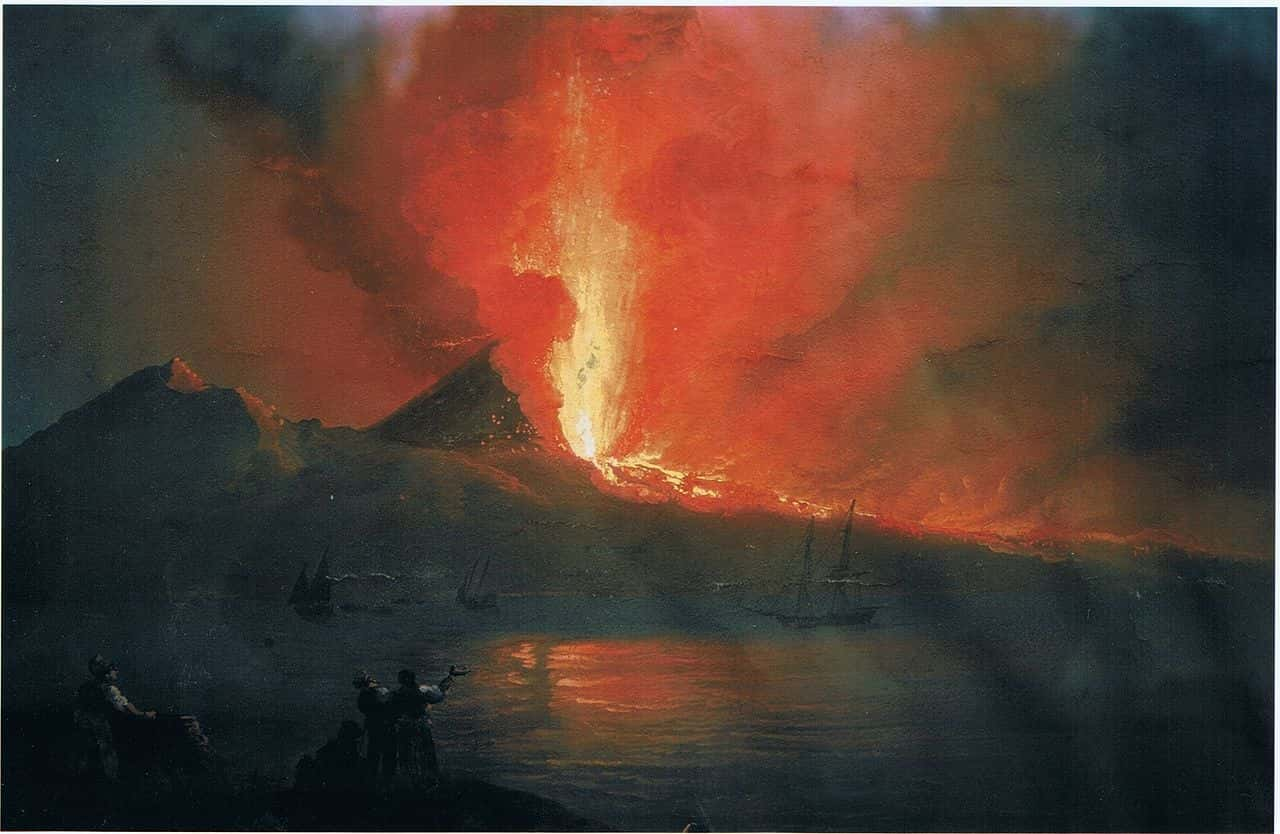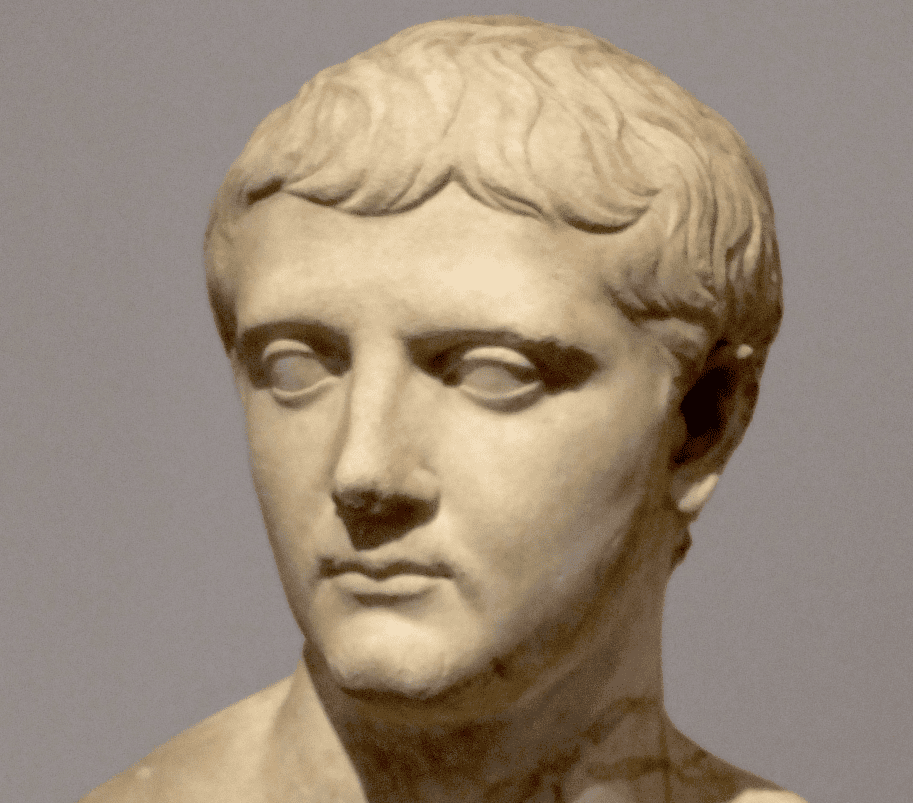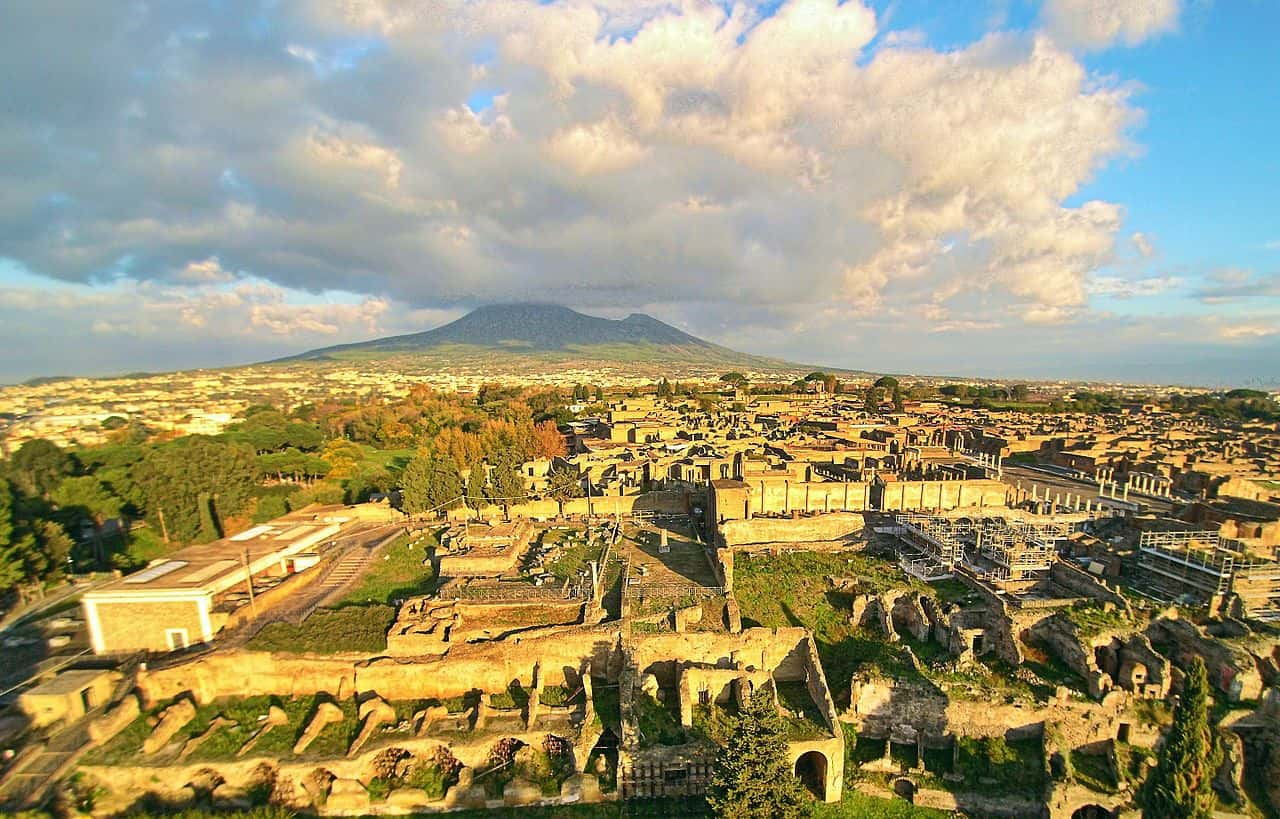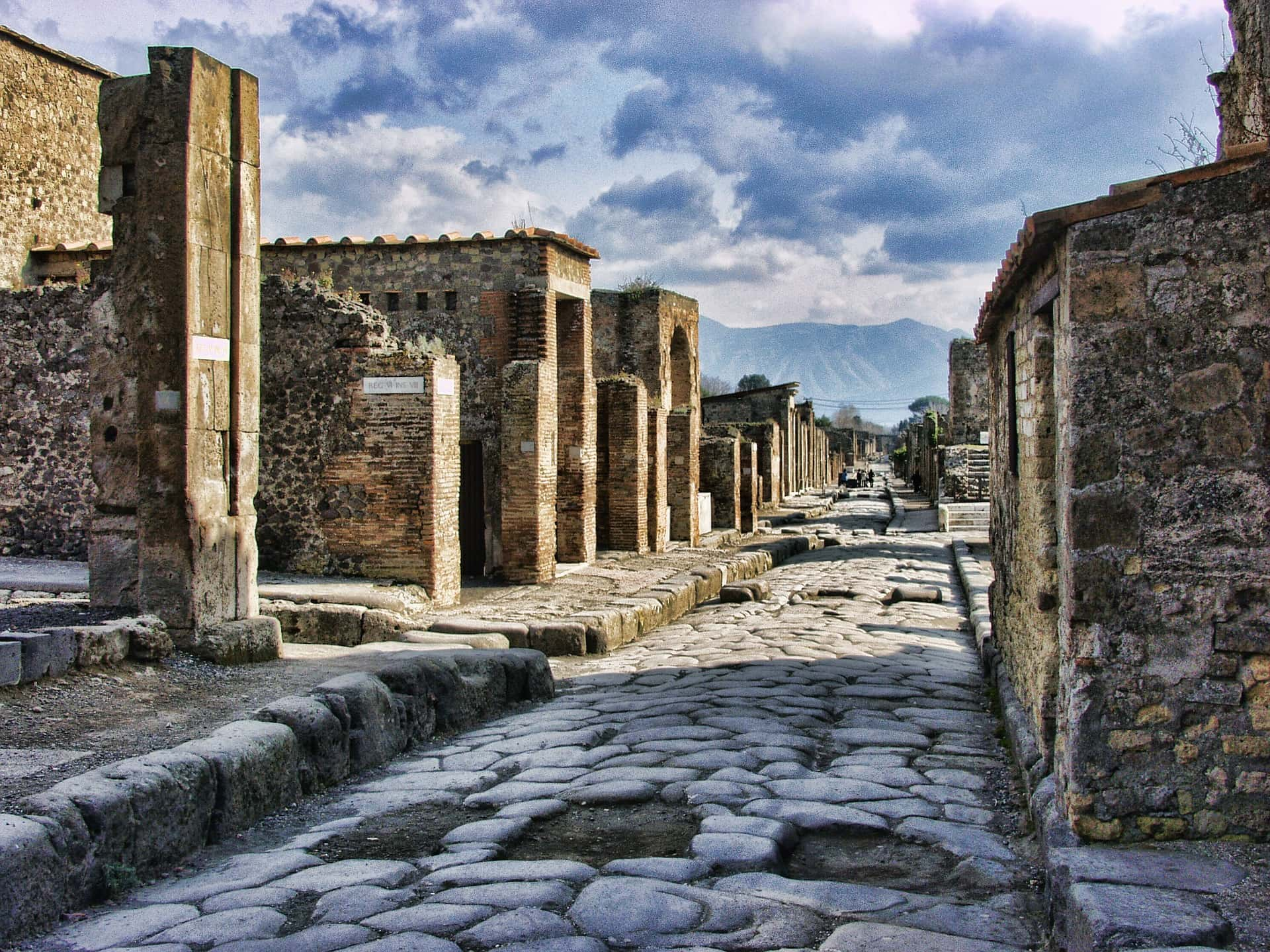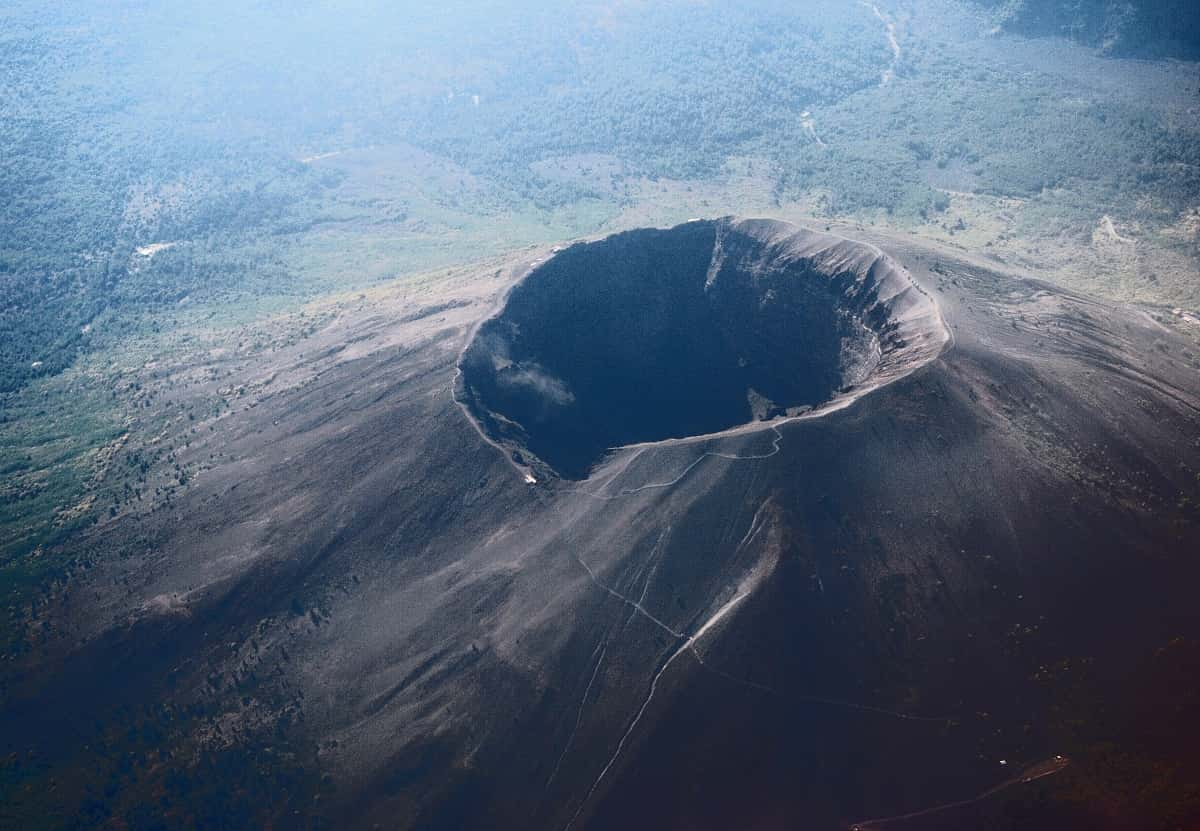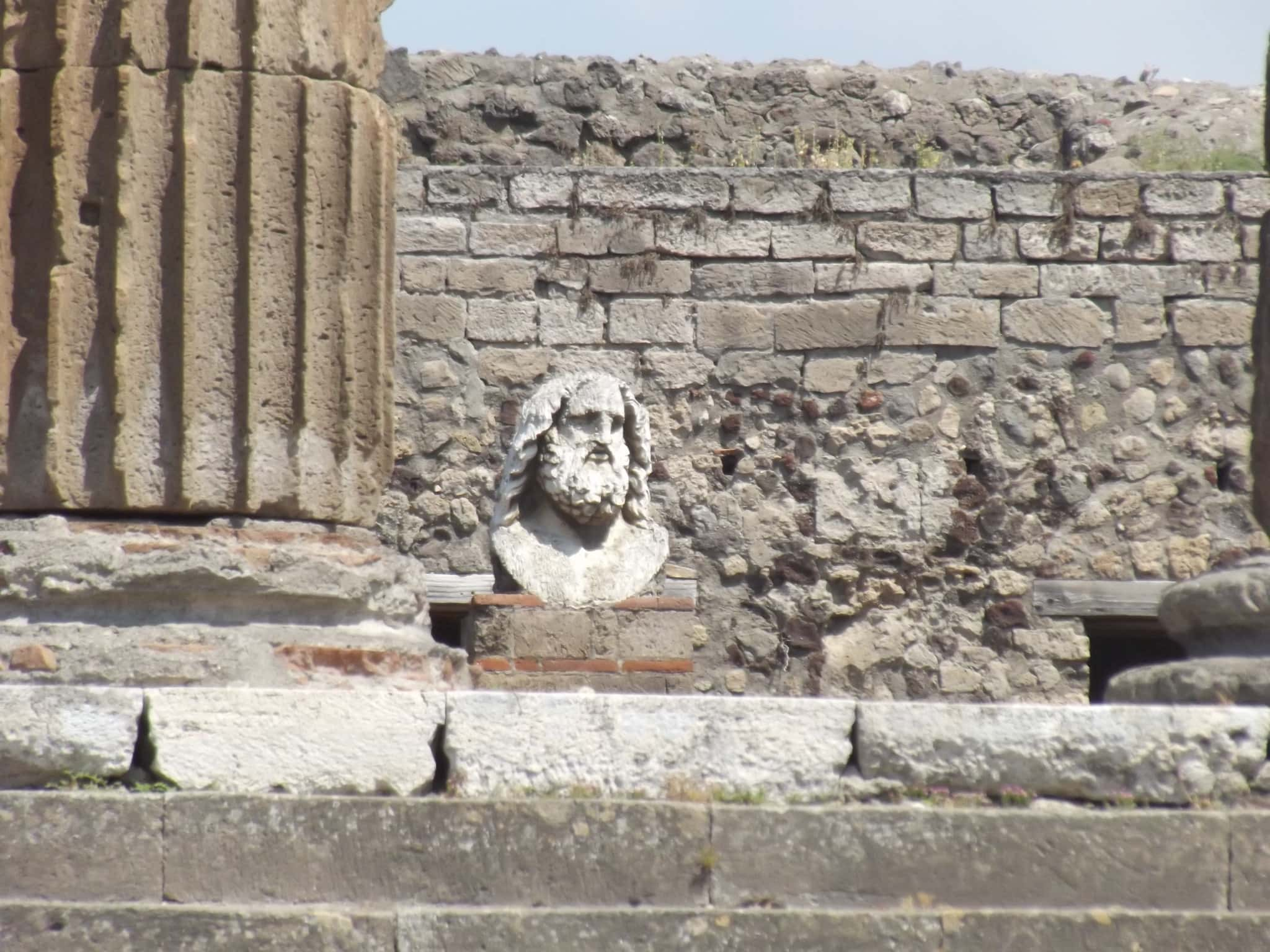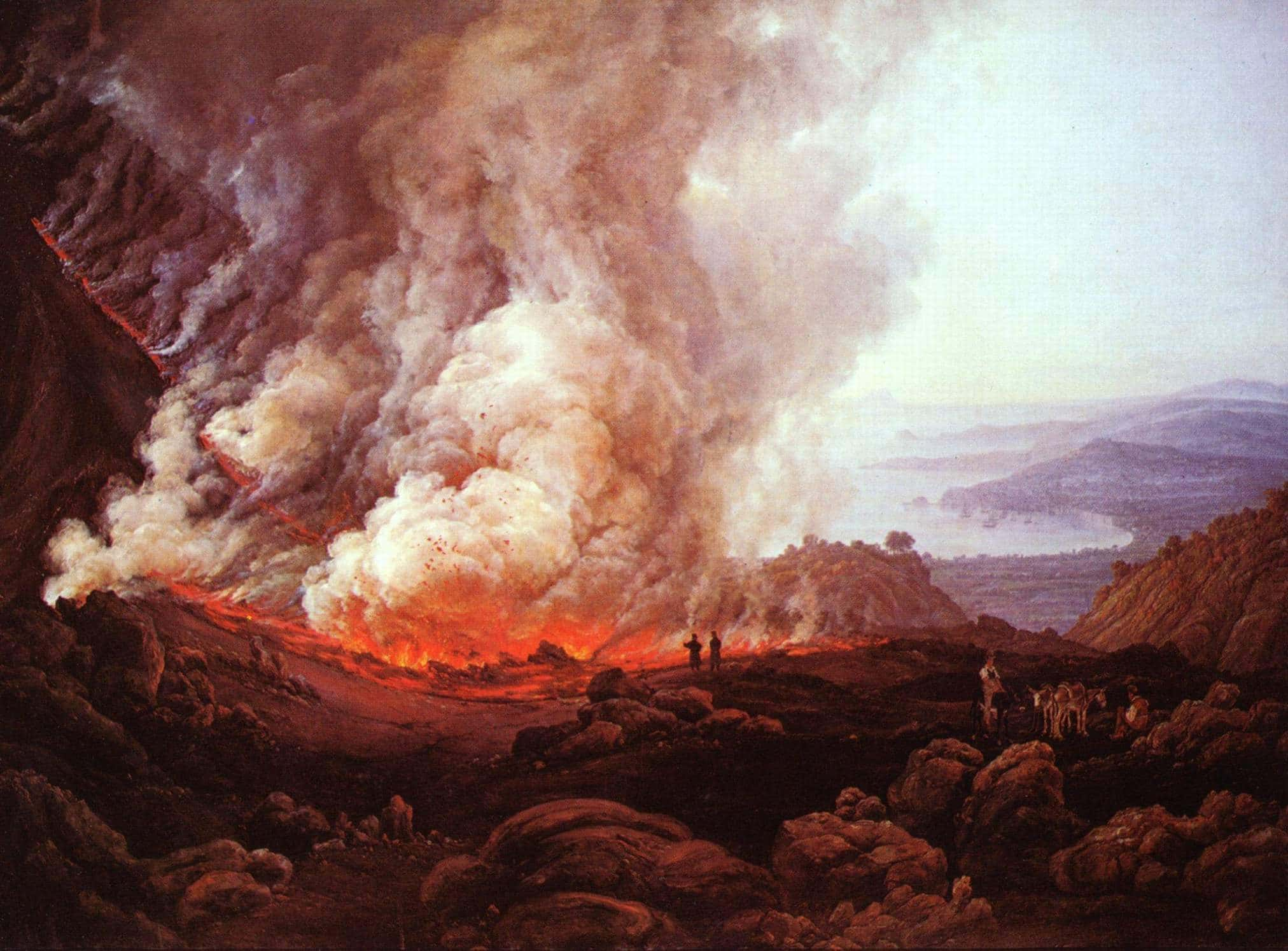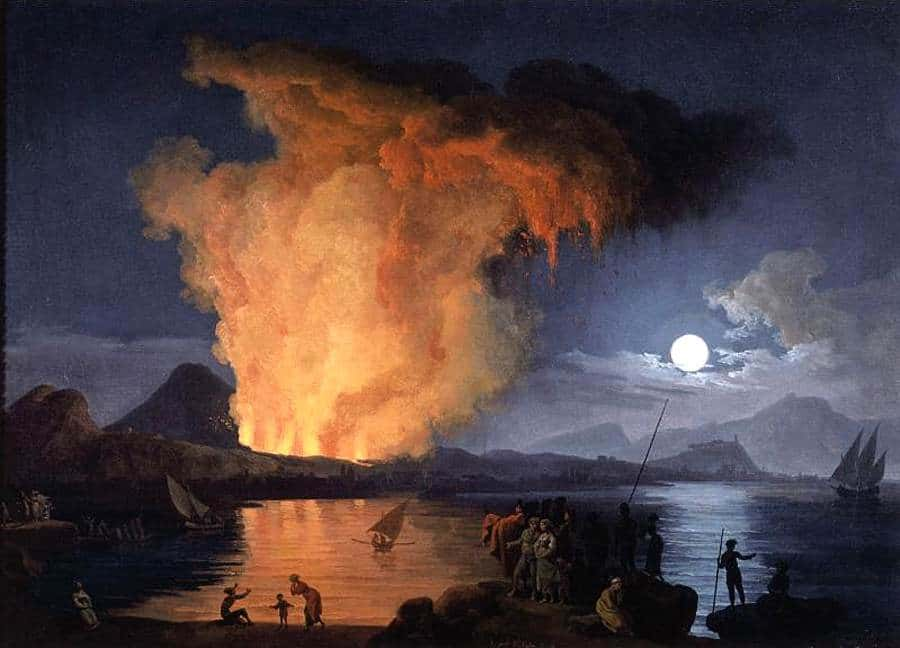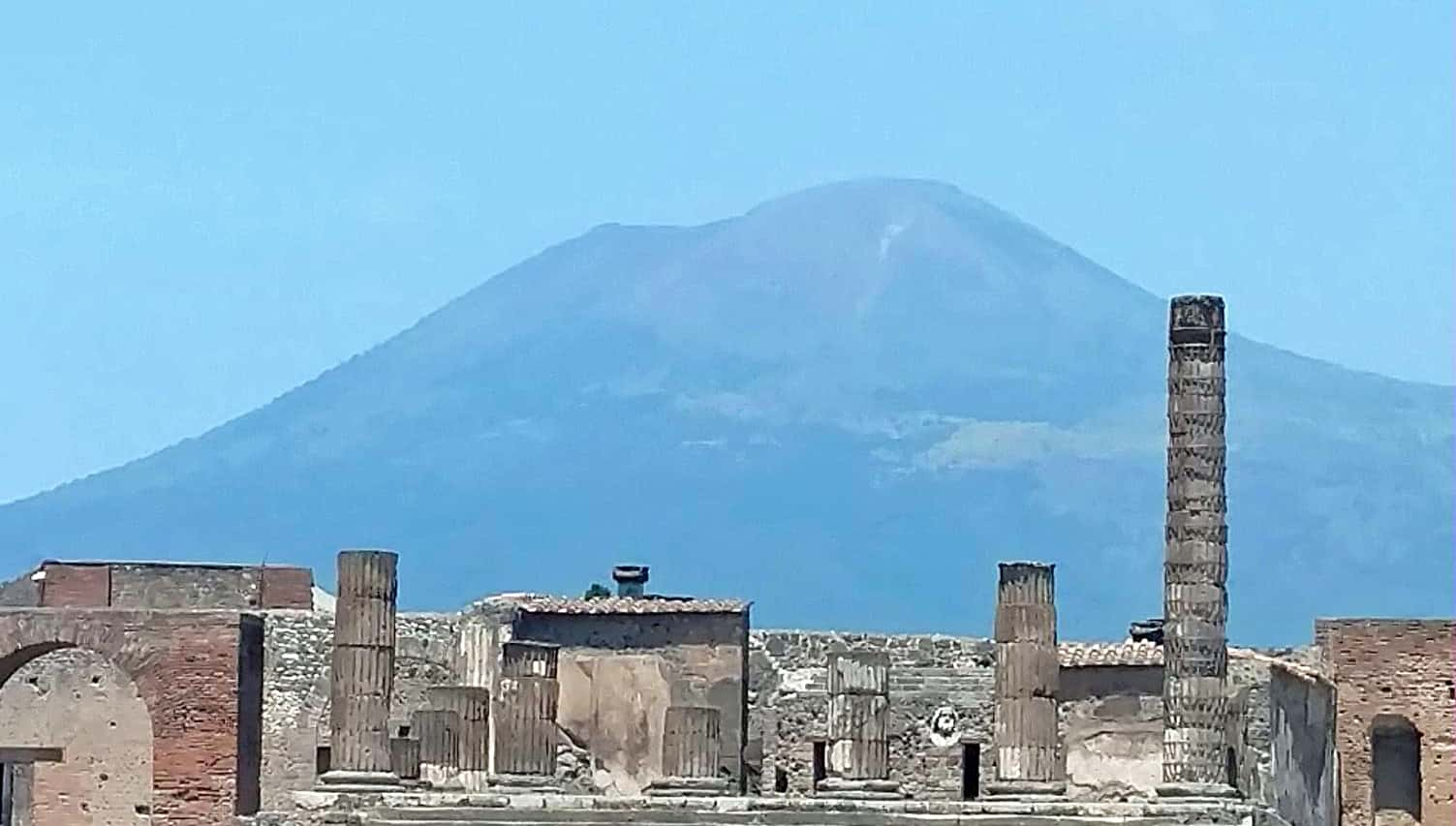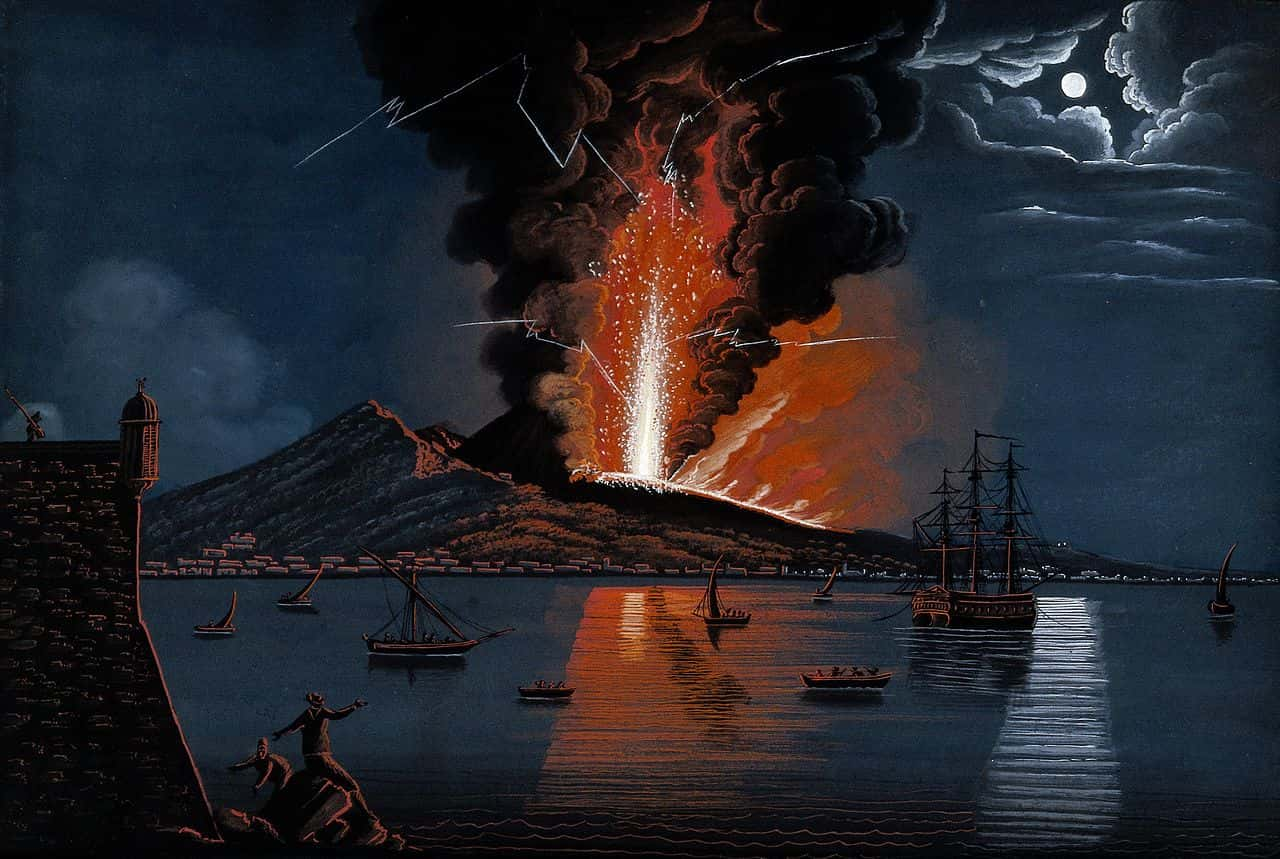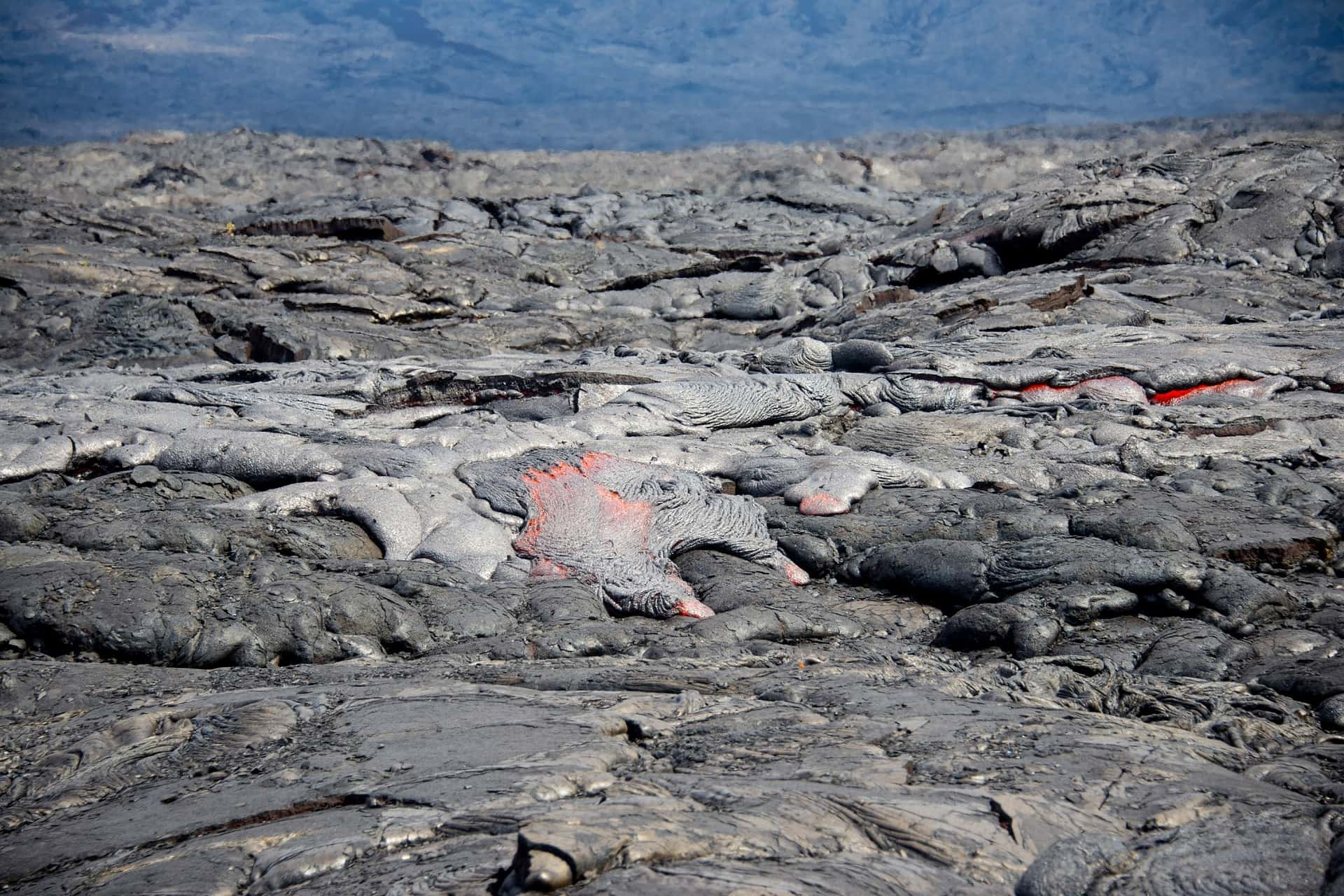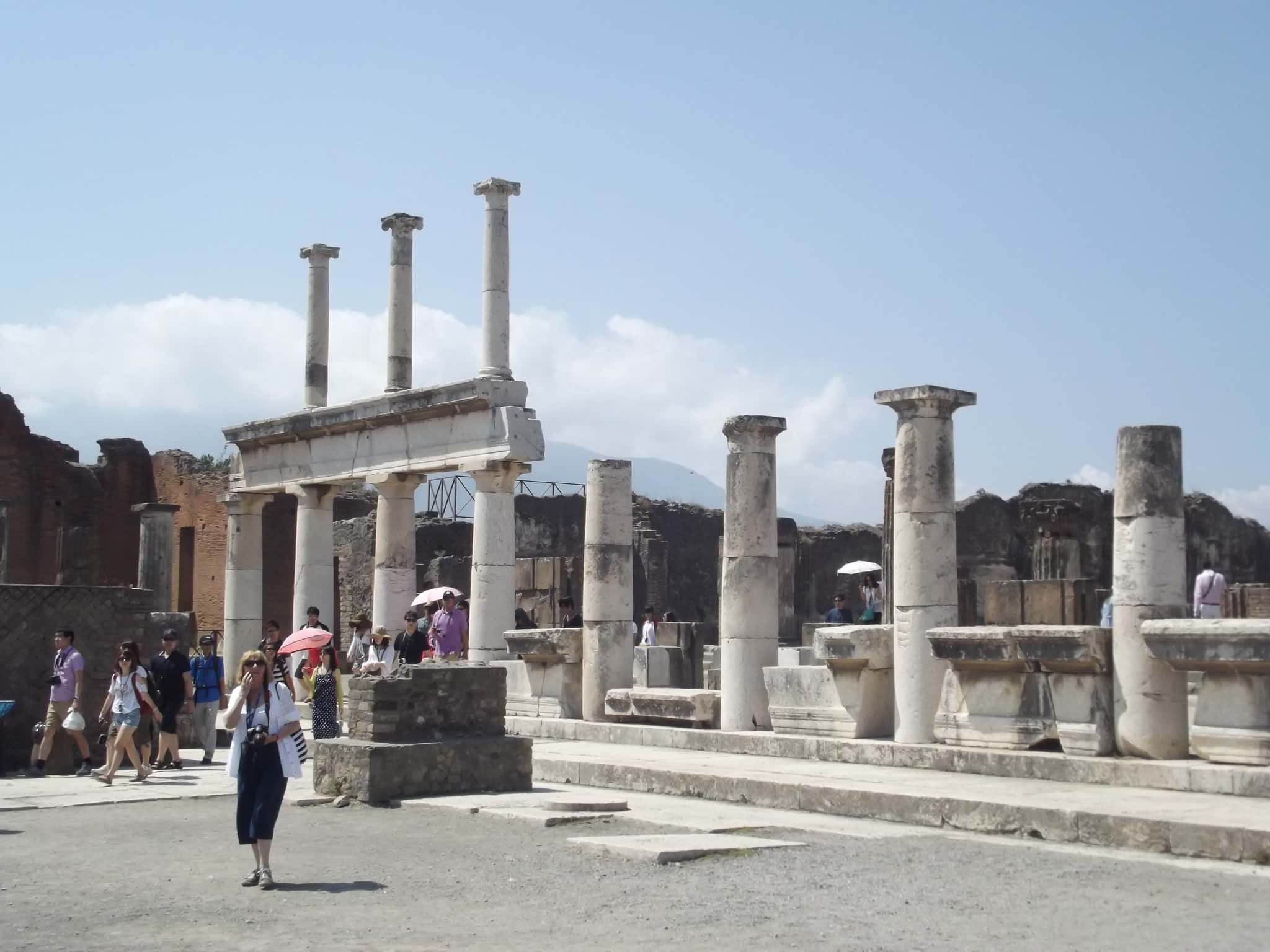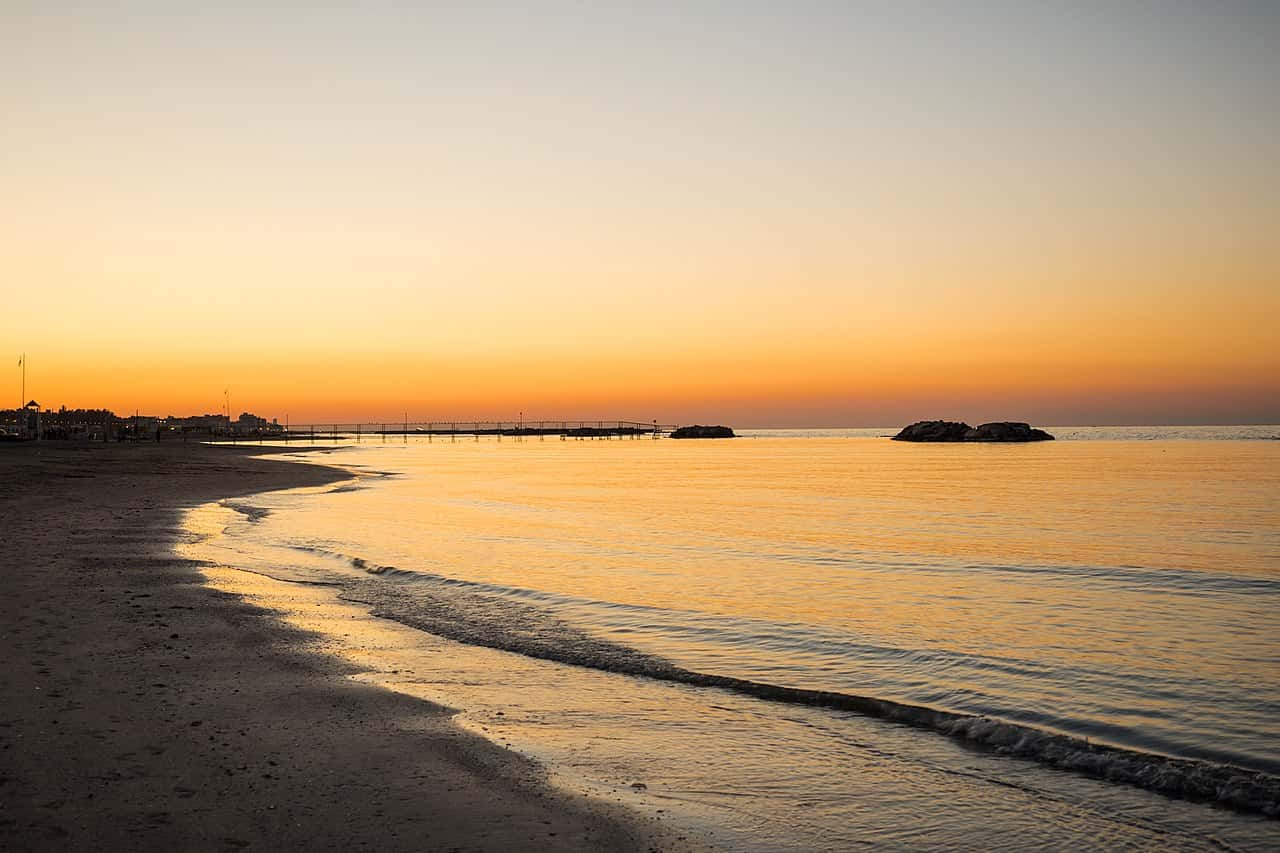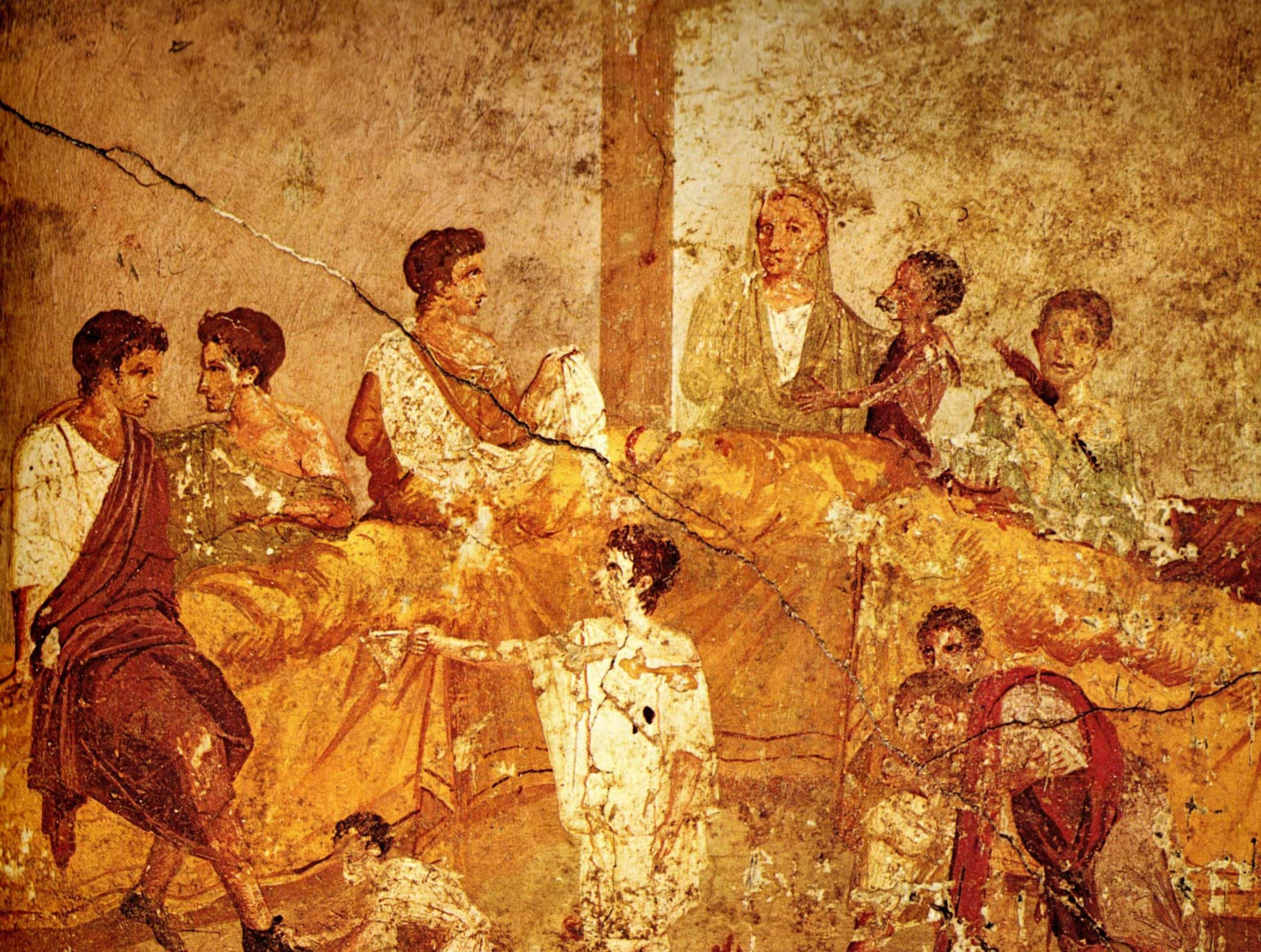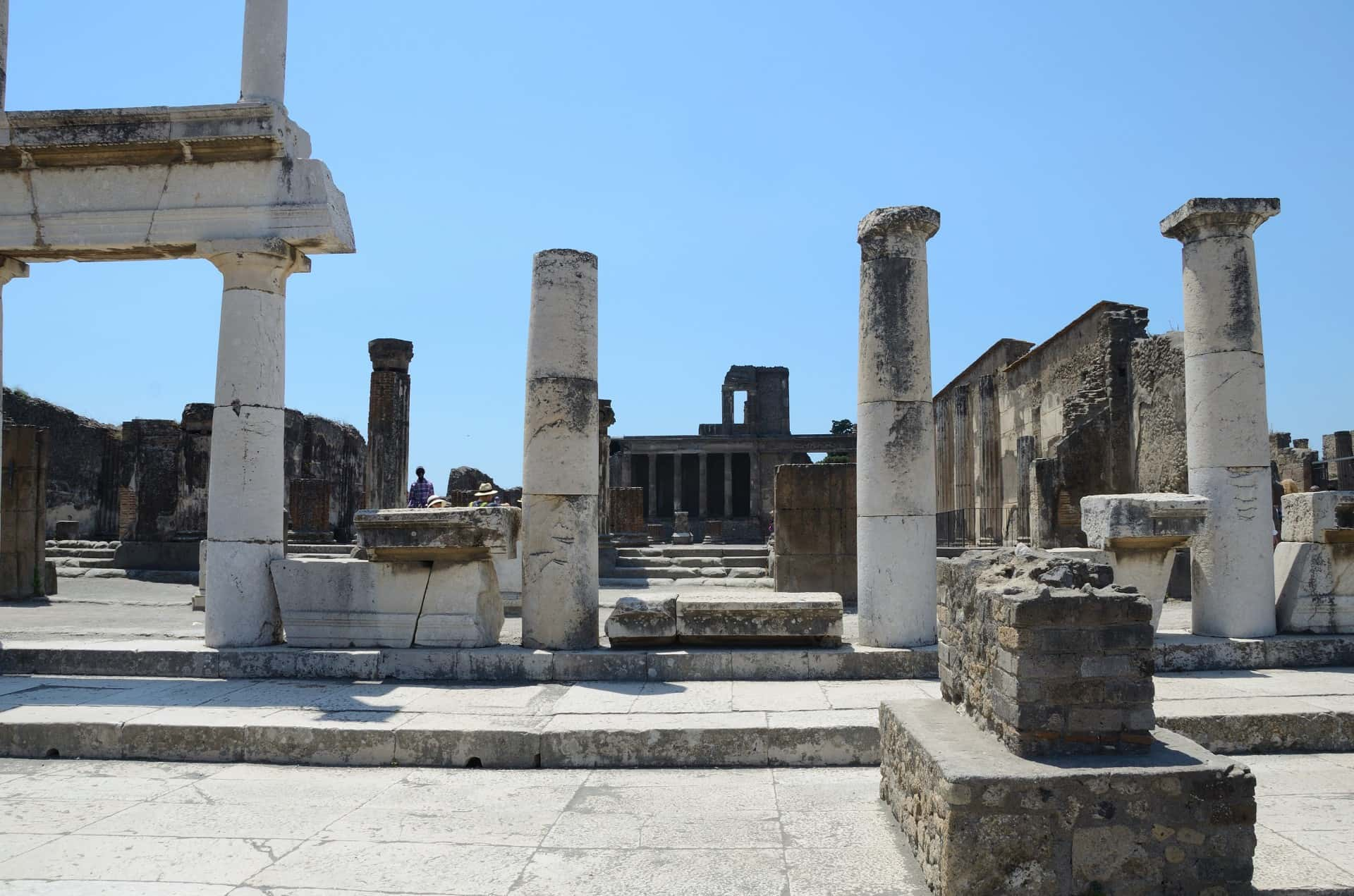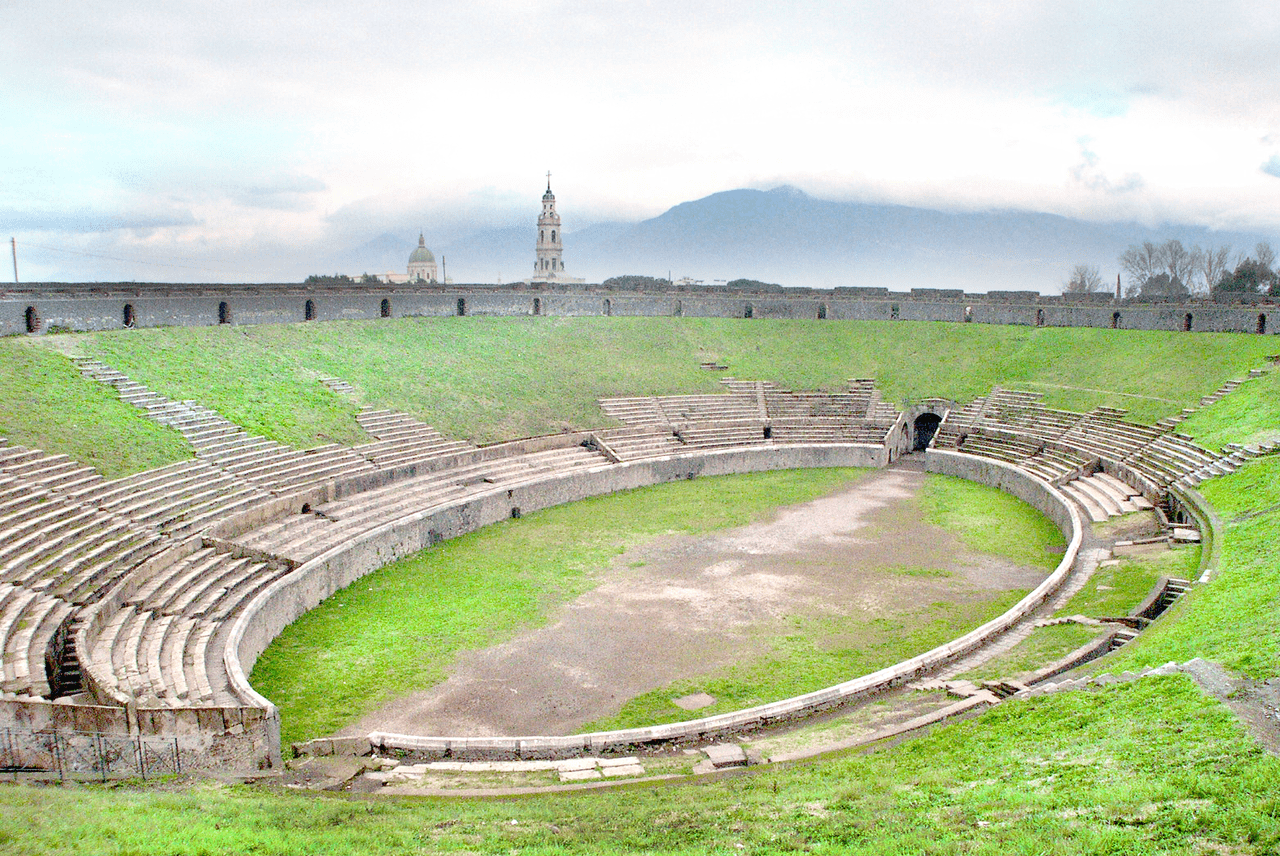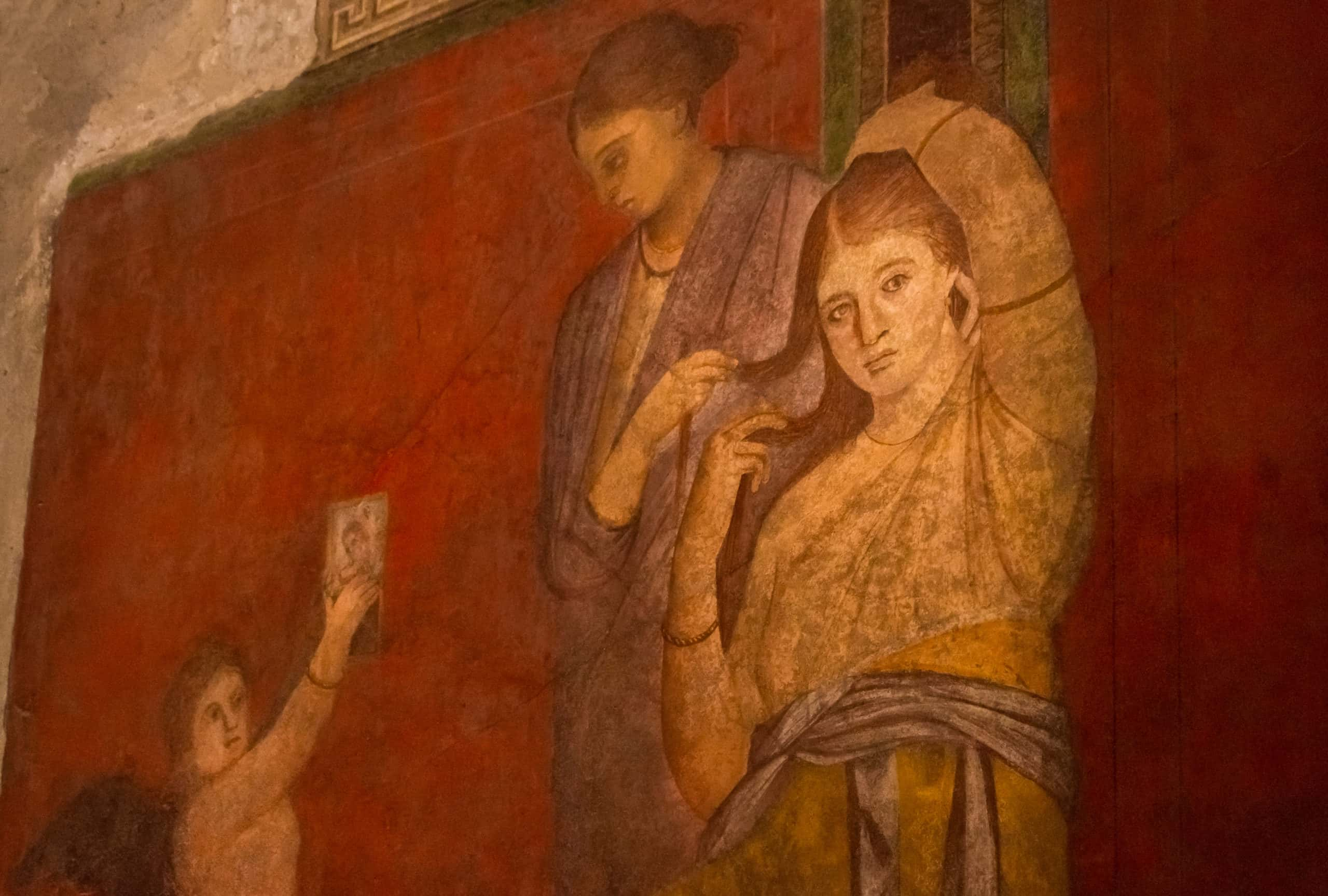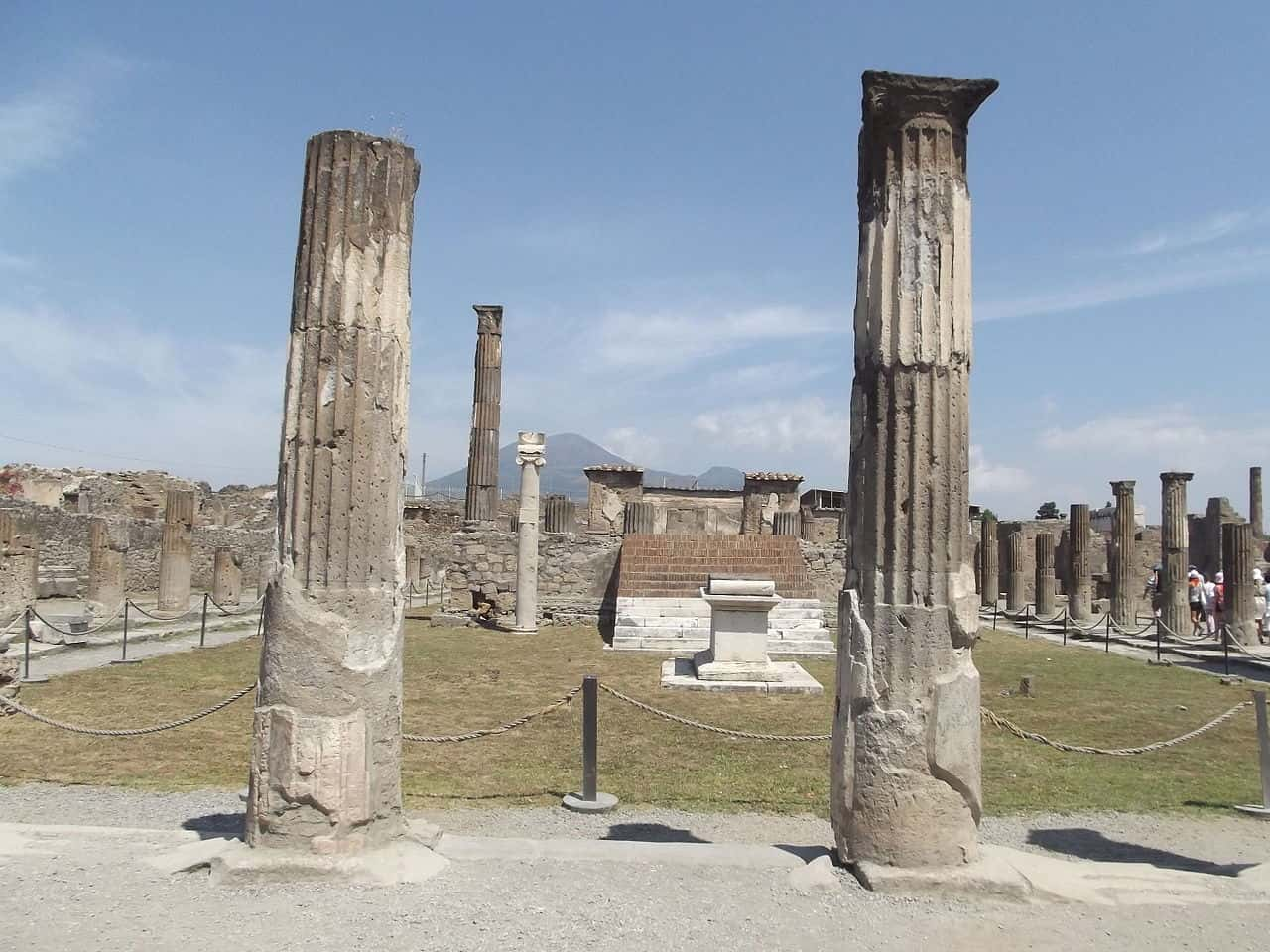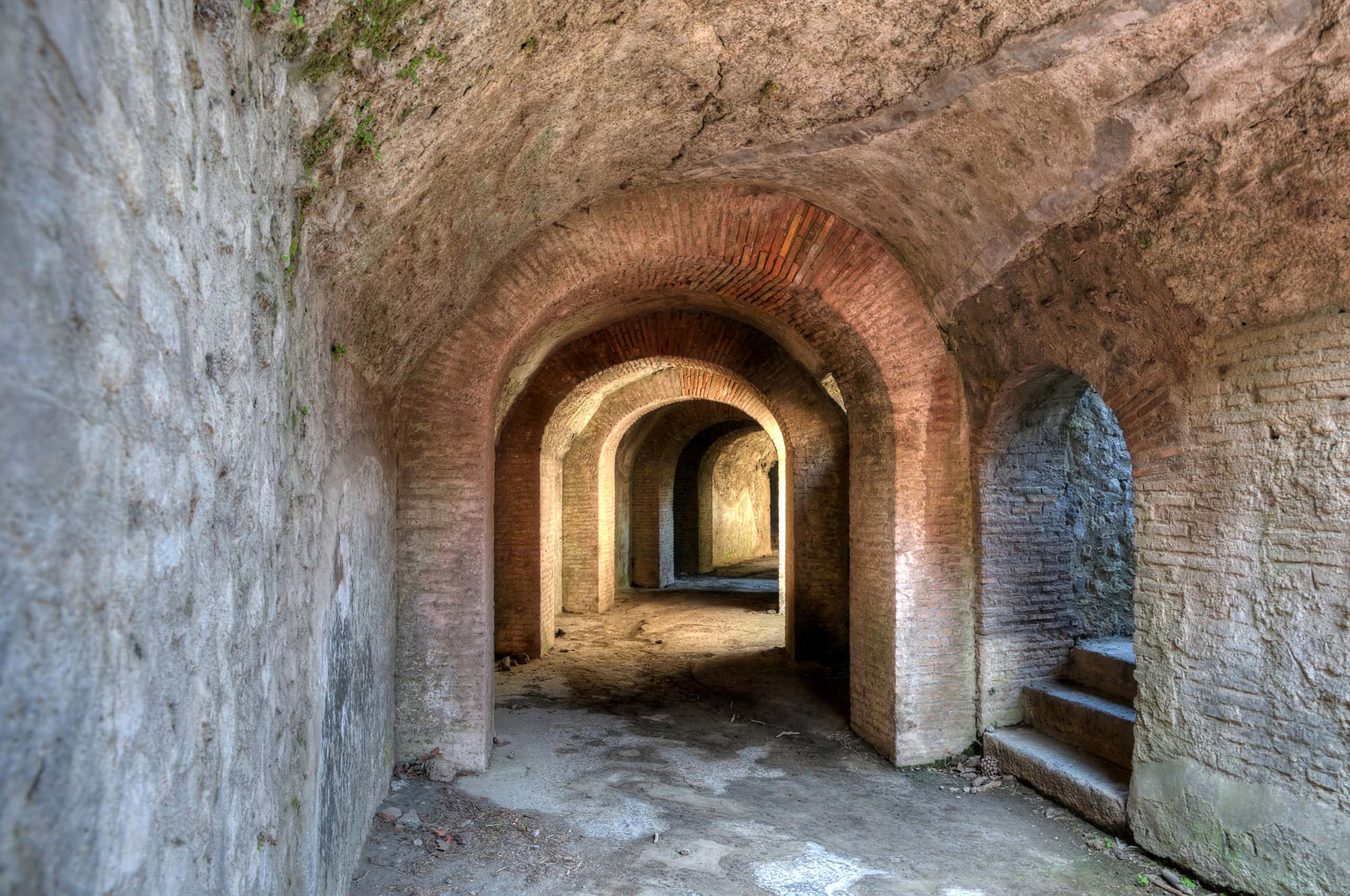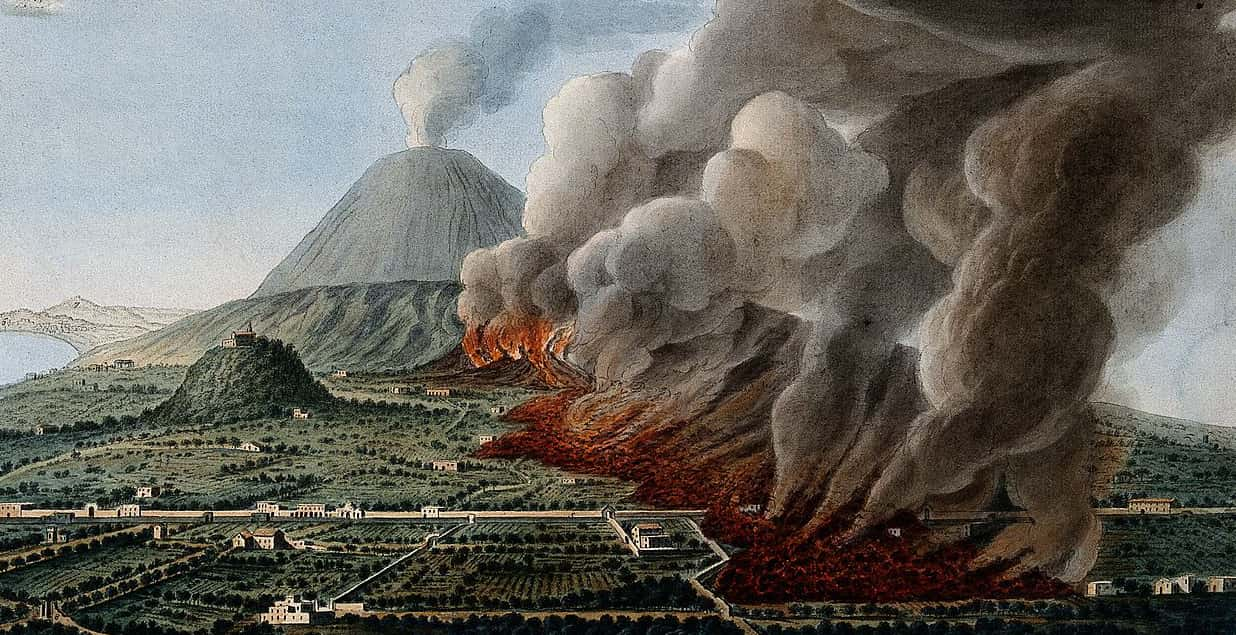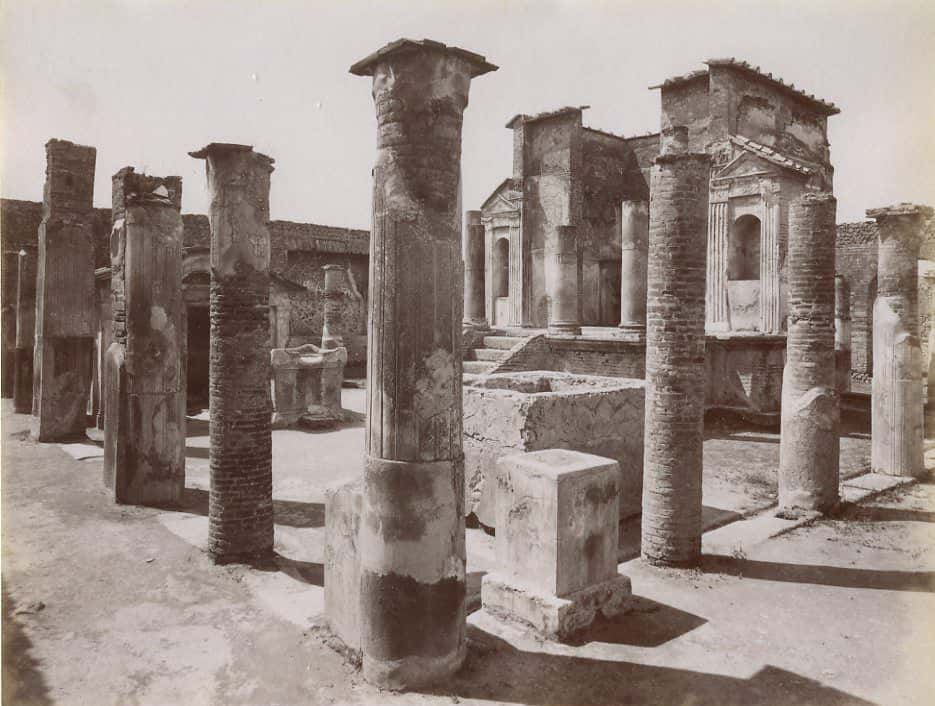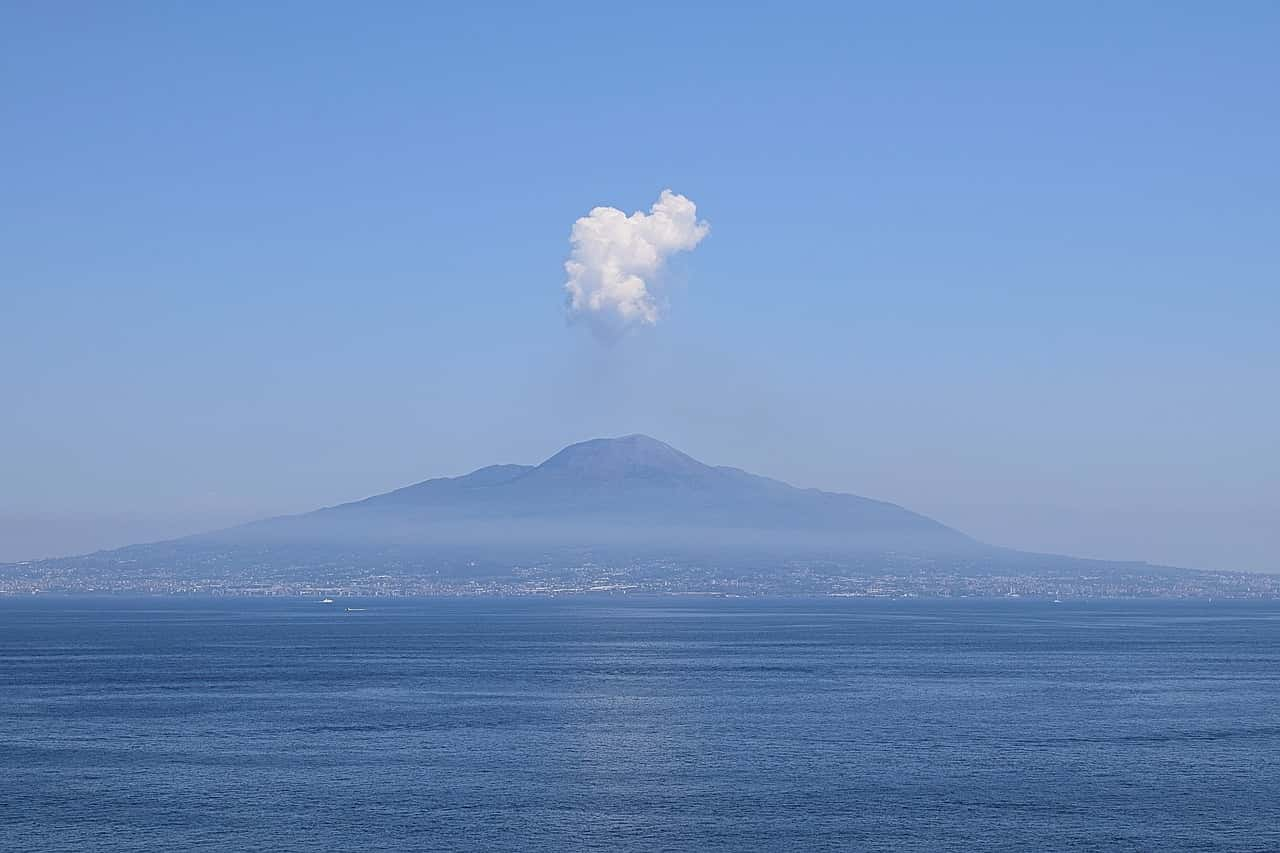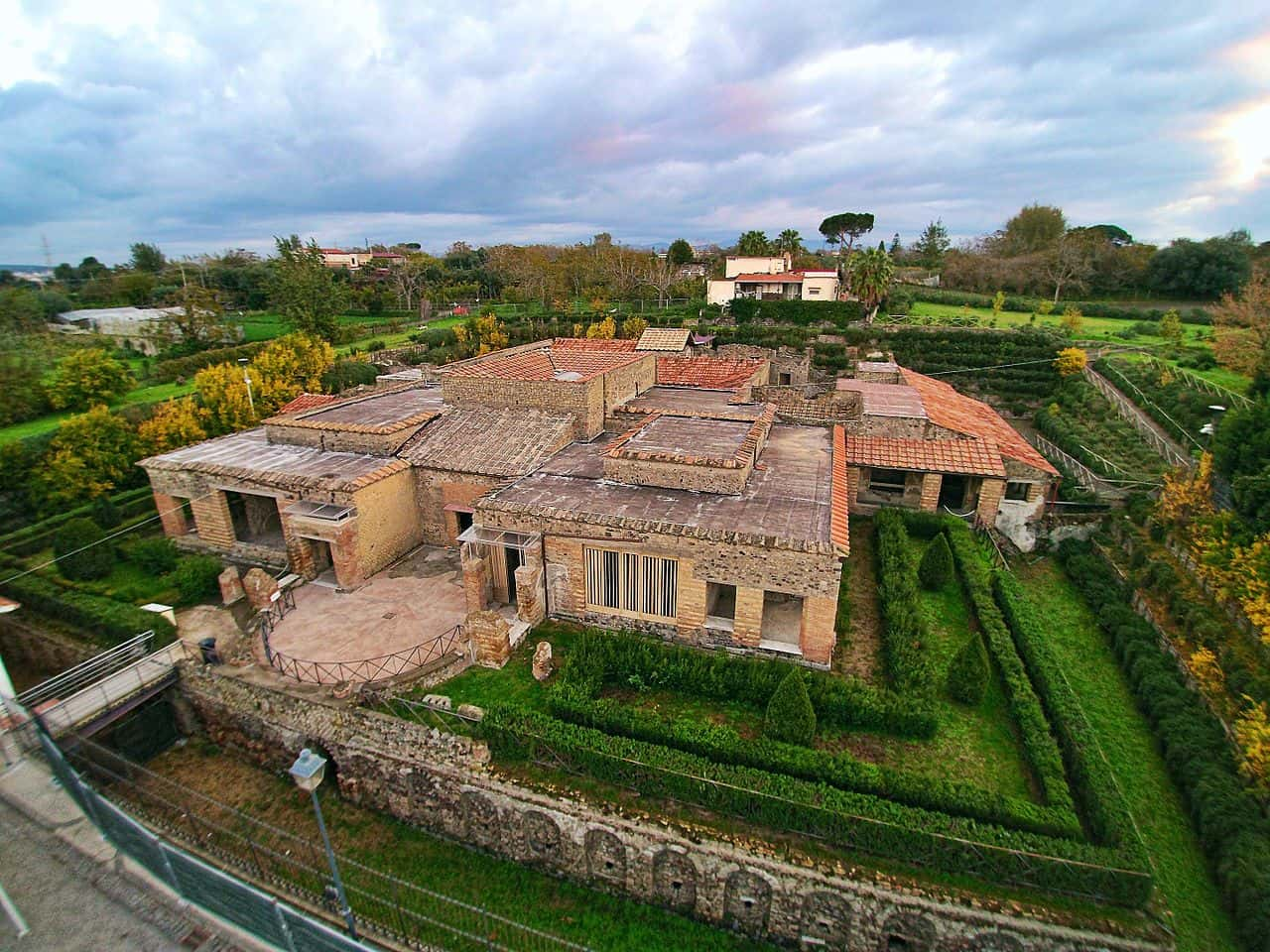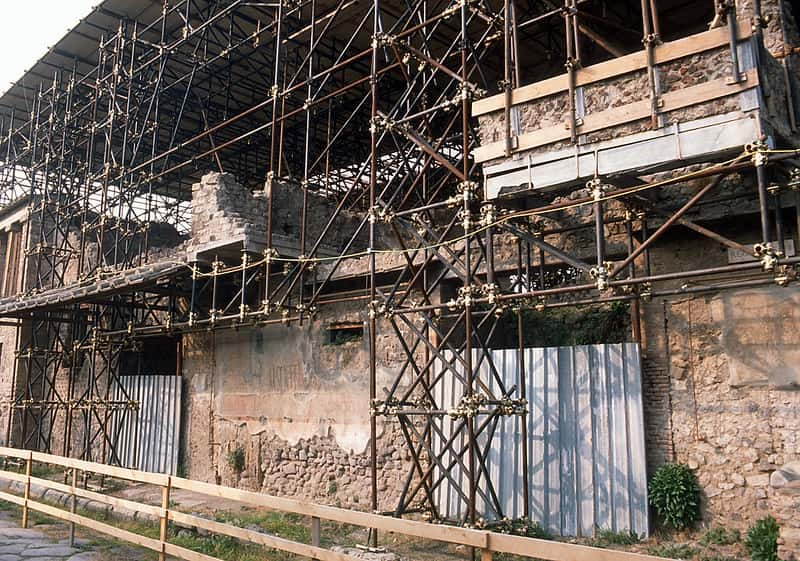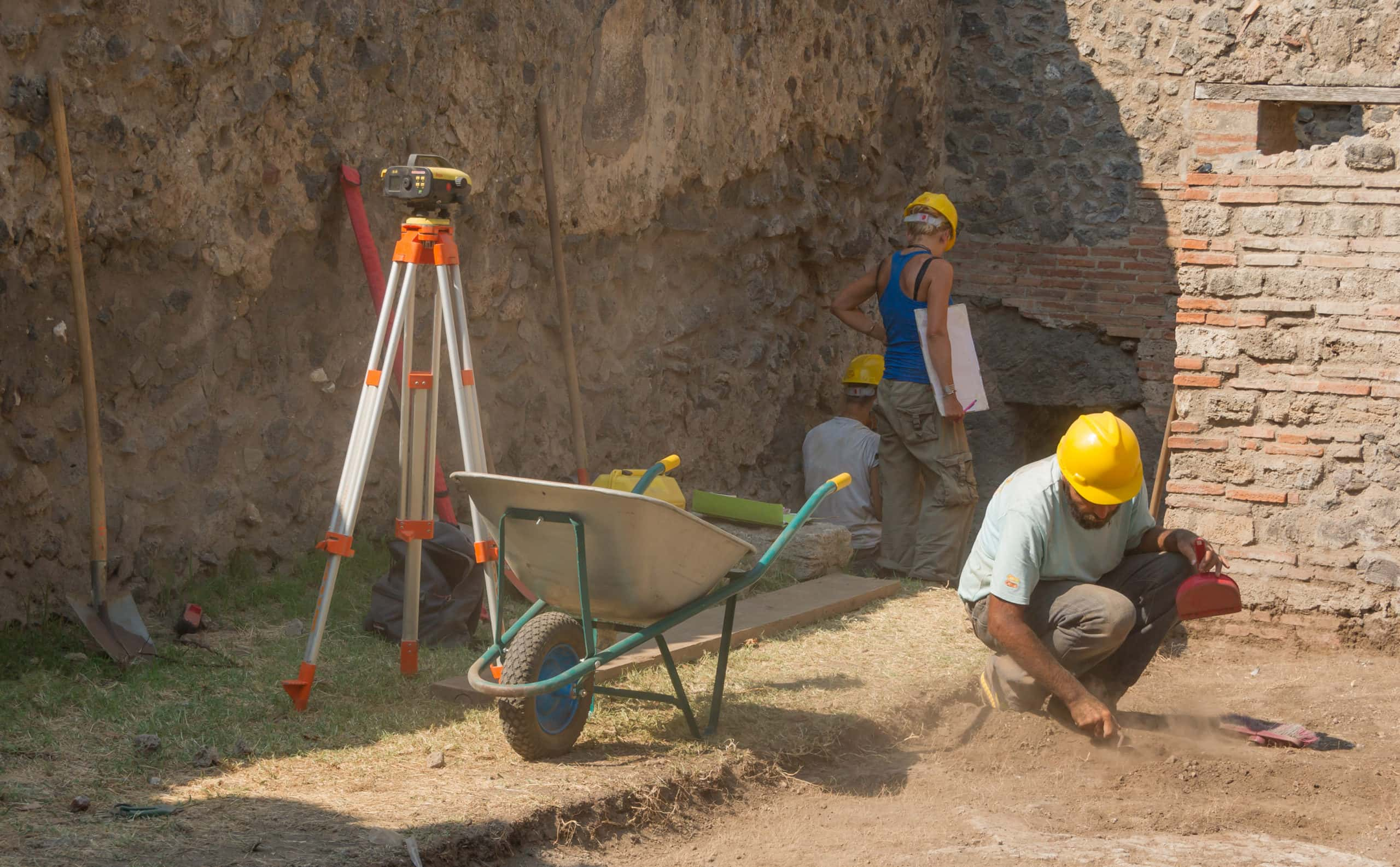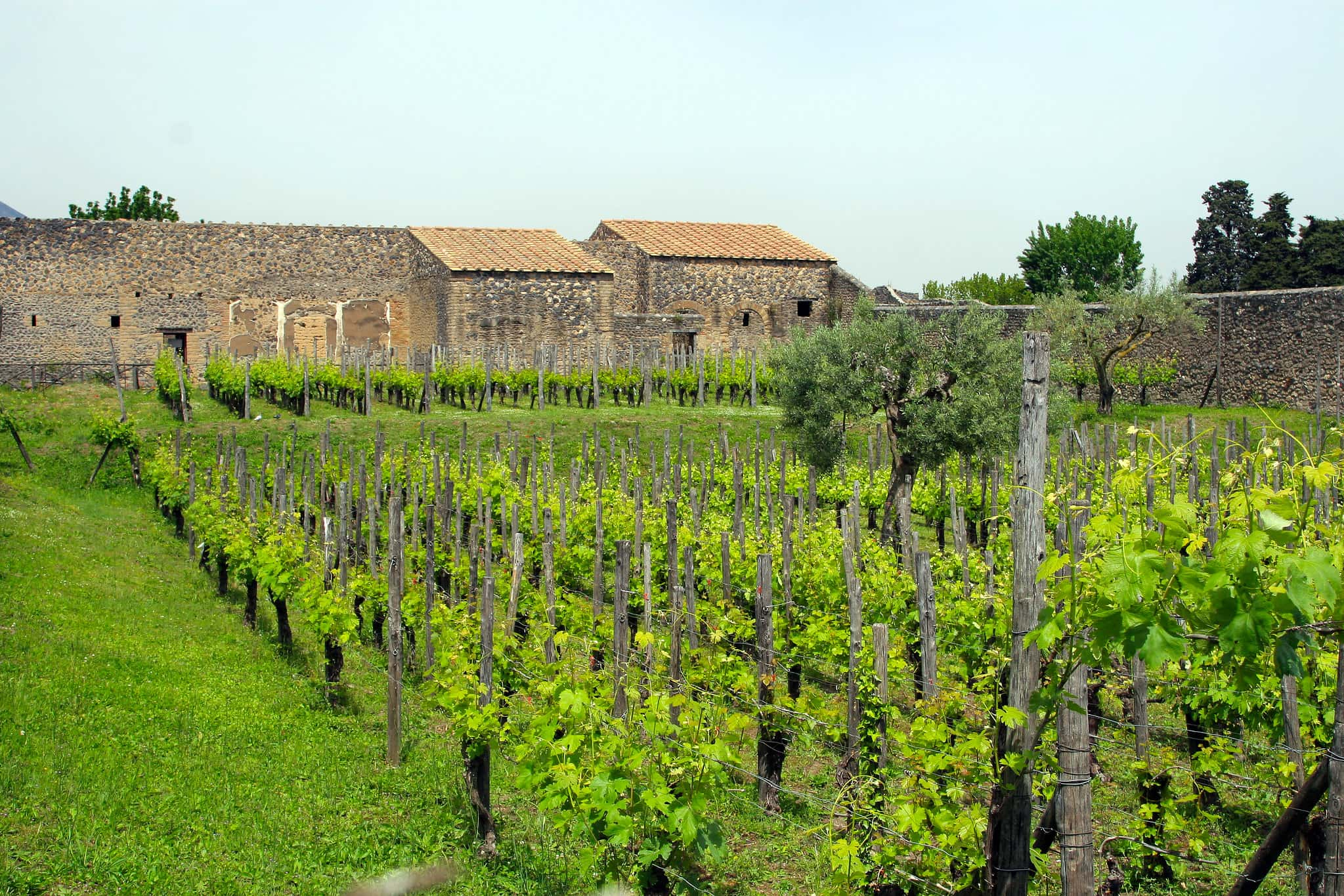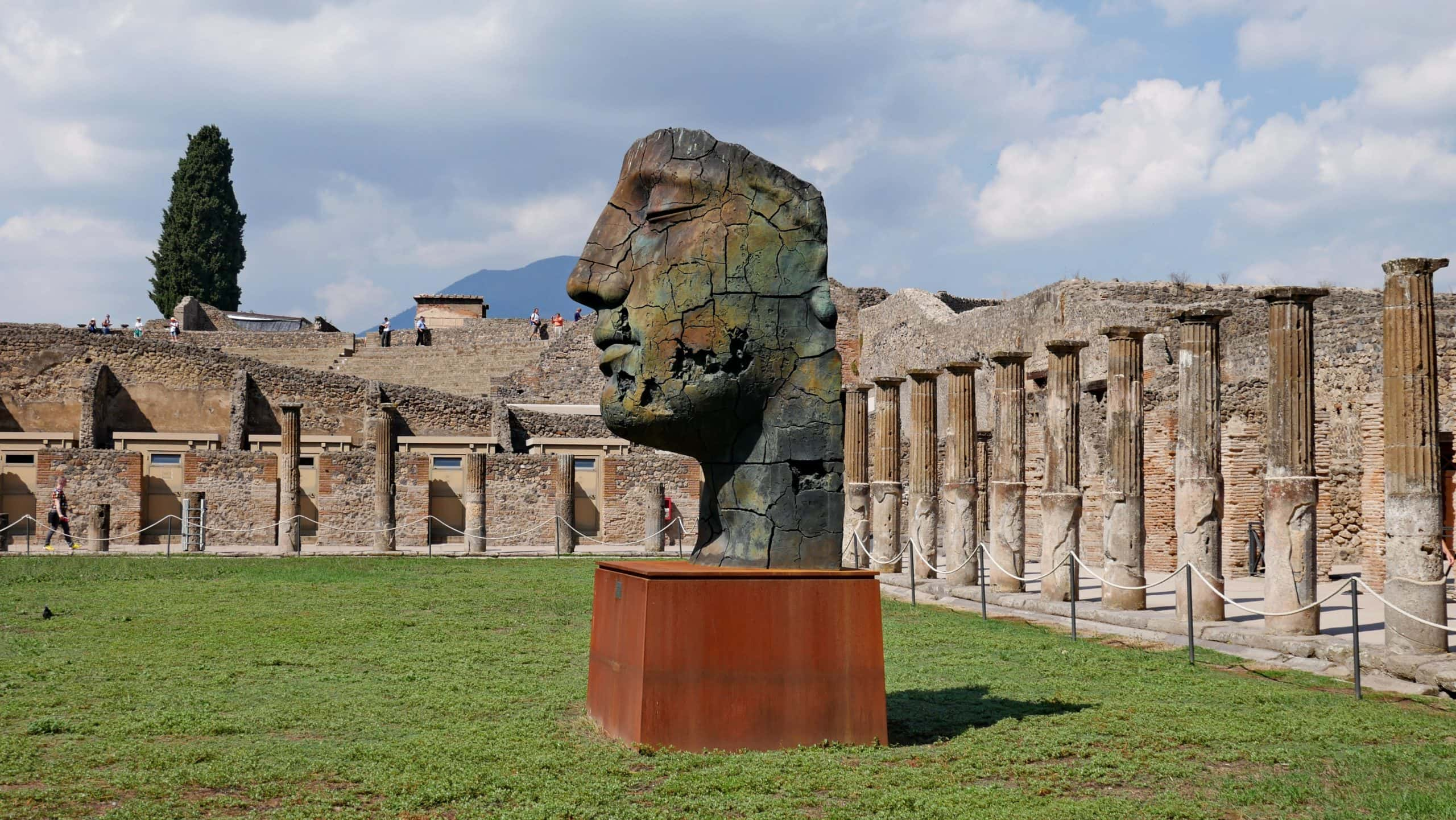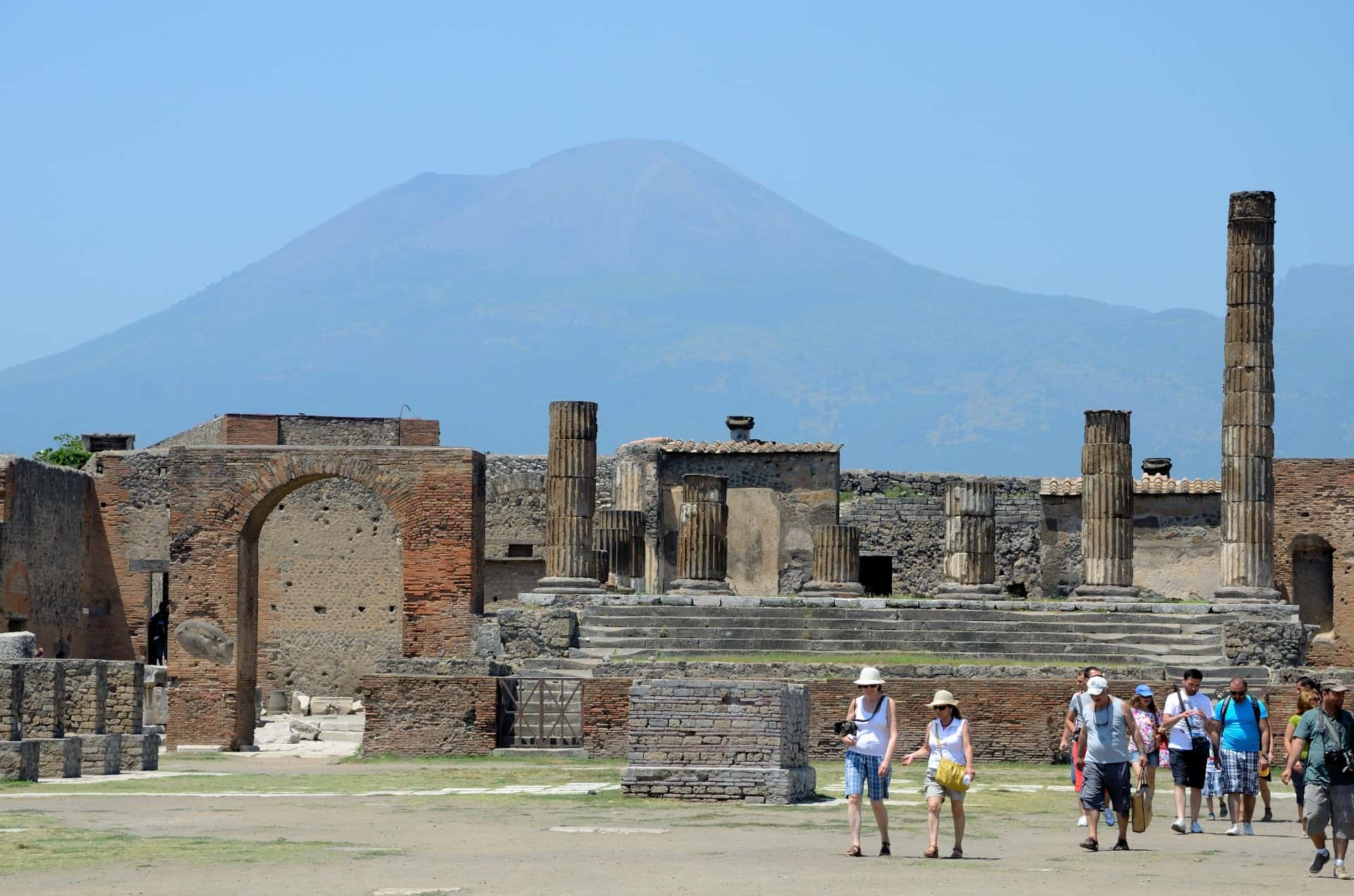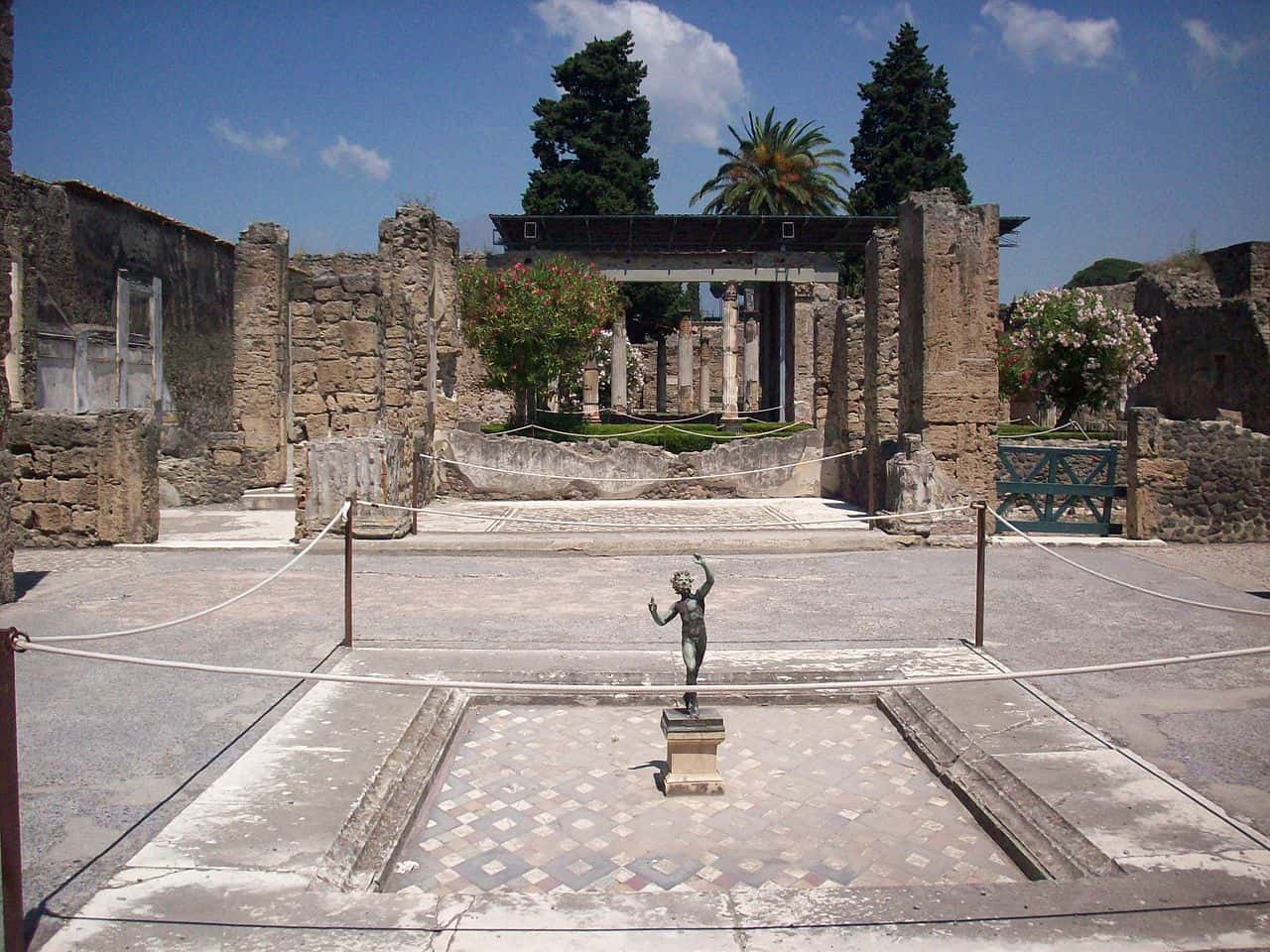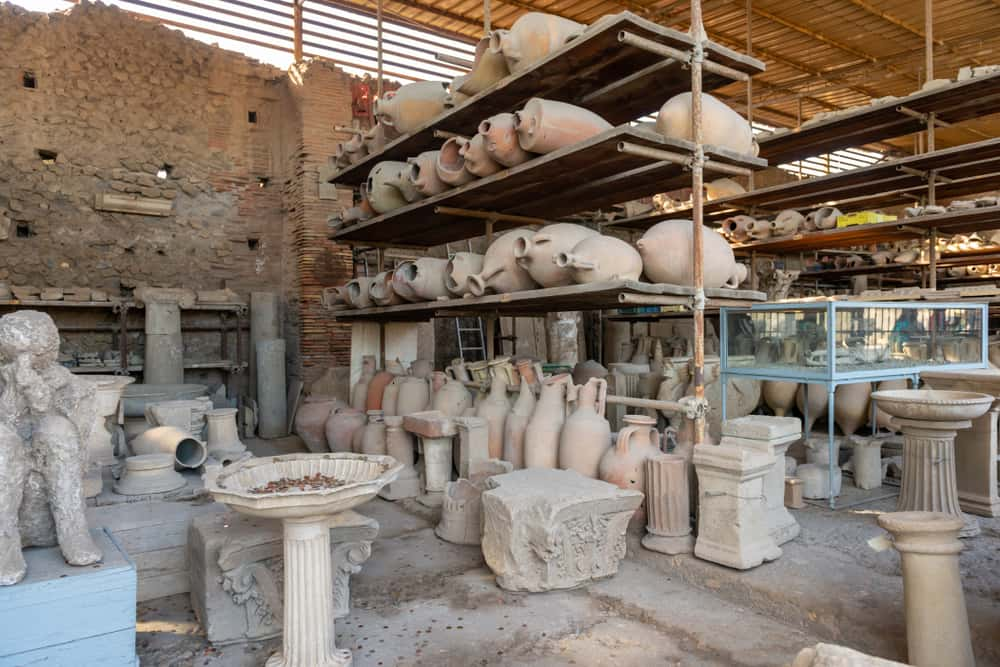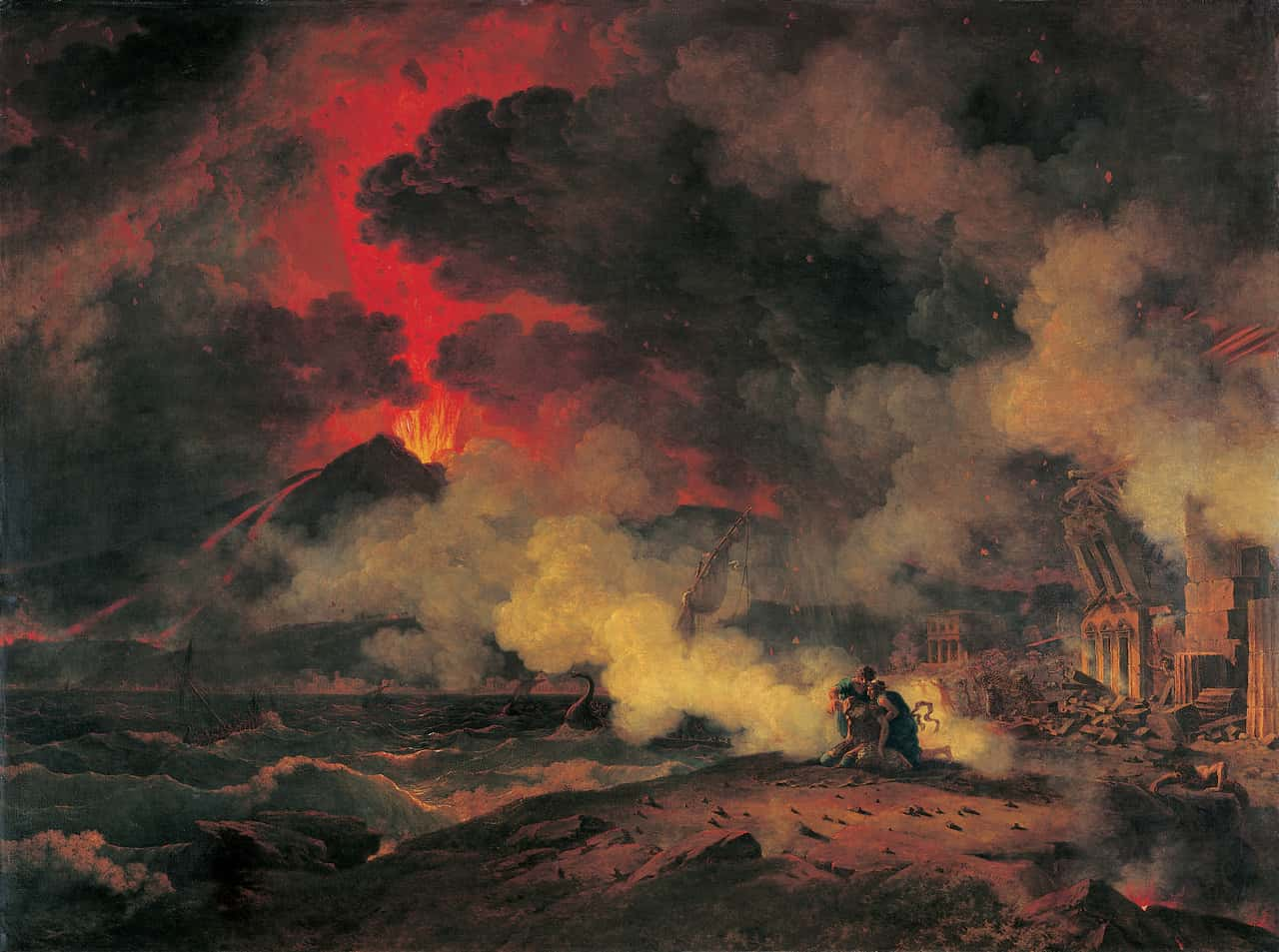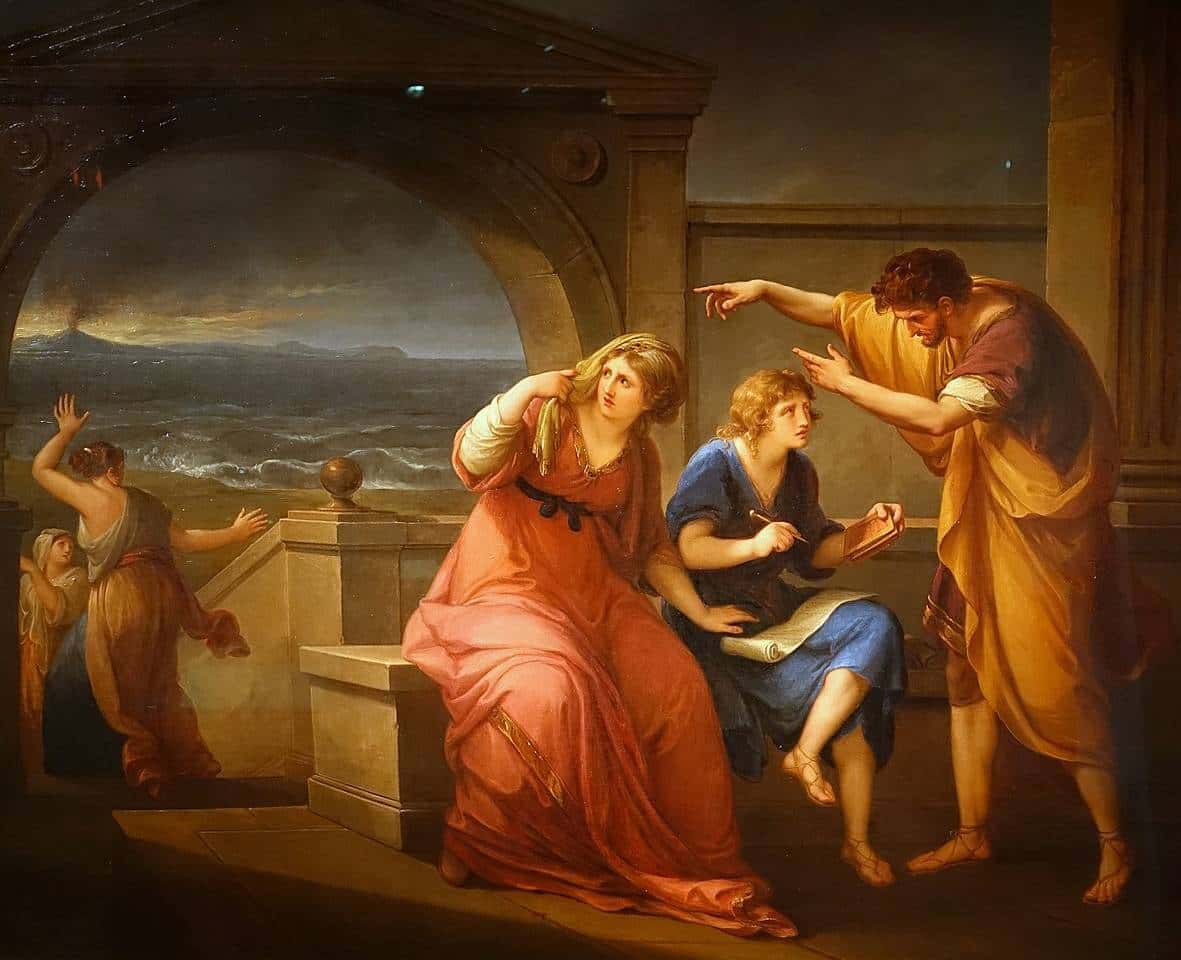“The destination of the journey could not be altered, only the manner in which one approached it—whether one chose to walk erect or to be dragged complaining through the dust.” ― Robert Harris, Pompeii
The ancient city of Pompeii was located near Naples in the Campania region of Italy. In 79 AD, the city, along with the neighboring Herculaneum and many surrounding villas, was destroyed by the eruption of Mount Vesuvius. The site was lost for about 1,500 years, but was rediscovered in 1748. Due to a lack of air and moisture, many artifacts have been remarkably preserved, and have offered valuable insight into Roman life at that time. Below are 42 eruptive facts about the city of Pompeii and the disaster that buried it.
Pompeii Facts
42. They Had No Idea
Before the disaster, Mt. Vesuvius hadn’t erupted in over 1,800 years. As a result, the inhabitants of Pompeii had no idea that Vesuvius was even a volcano.
41. Roman Holiday
The city of Pompeii was once a thriving city, and a popular spot for wealthy Romans to spend their holidays. Even the Emperor Nero is thought to have potentially had a home there.
40. Ignoring the Signs
In 62 AD, a major earthquake rocked the city and caused major damage to the springs and piping that made up the city’s water supply. For years after that, several minor quakes shook the city, and they became so commonplace that nobody paid them much attention. This was true on August 24, 79 AD, when several earthquakes shook Herculaneum and Pompeii, and nobody considered it to be out of the norm.
39. Imperfectly Preserved
Pompeii is often thought of as being frozen in time—a perfectly preserved glimpse into the past—but in reality, it’s an extremely difficult site to study. The city suffered from a great deal of damage, and fires destroyed most organic material. Many of the residents also escaped to the countryside, taking their possessions with them. After the eruption, efforts were made to recover valuables, but few records of these finds exist. Some of the uncovered materials were also reported to have been deliberately destroyed because they weren’t of high quality.
38. Scenic and Deadly
Mount Vesuvius is a stratovolcano, which is an extremely deadly form of volcano. A stratovolcano has a mild lower slope with a sharp rise towards the peak. Their eruptions are explosive, and have fast-moving currents of fluidized rock and gases. Due to the location of Vesuvius, cities like Pompeii (and even Naples, then and now), were greatly susceptible to destruction in the event of an eruption.
37. Rocking Out in Pompeii
In 1972, Pink Floyd recorded a live performance without an audience at the Roman Amphitheatre in Pompeii. The idea was conceived by band member Adrian Maben, who visited Pompeii while on holiday in Naples. During his visit, he lost his wallet, and upon returning to the amphitheatre to search for it, he thought the natural background sounds and the silence would make a great setting for their music. Thanks to a friend of Maben’s who was a professor at the University of Naples, they were able to secure permission from local authorities to film there. The concert was an unforgettable point in the history of music, even if almost no one was there to see it.
36. Under Construction
At the time of the eruption, Pompeii resembled a construction site. Both public buildings and private houses that had been damaged during the earthquakes were under reconstruction, and some buildings may have been repaired several times in the years between the first earthquake and the eruption.
35. Sometimes White, Sometimes Dark
When Mt. Vesuvius erupted, a Roman scholar by the name of Pliny the Younger described the debris cloud as “…sometimes white, sometimes dark and stained by the sustained sand and ashes." One hour after the explosion, at 1pm, the ash cloud blocked the sun, and ash fell at a rate of about 6 inches per hour.
34. Two Days Long
The eruption itself lasted for about 24 hours, but the city continued to be covered by molten rock and ash for two days after that. When all was said and done, the city was buried up to 20 feet deep in some places.

Sign up to our newsletter.
History’s most fascinating stories and darkest secrets, delivered to your inbox daily. Making distraction rewarding since 2017.
33. History Could Repeat Itself
Mt. Vesuvius is still considered an active volcano, and scientists warn that it could erupt at any time. Since 1944, hundreds of minor earthquakes have been reported in the region, and while Pompeii itself is uninhabited, there are more than 3 million people living in the vicinity of the volcano—the highest concentration of people living near an active volcano on earth.
32. No Words to Describe It
Not only were the people of Pompeii unaware that they were living in close proximity to a super dangerous volcano, they didn’t even have a word for it at the time. The word volcano is derived from the word Vulcan, who is the Roman God of Flame and Metal Forgery, but it wasn't created until years after the eruption.
31. No Escape
The lava that flooded the city reached a temperature of almost 1,300 degrees Fahrenheit, and traveled at a speed of 68 miles per hour. At that speed and temperature, anyone caught in its path would have had no chance of escape.
30. Predates Roman Rule
Pompeii is believed to have been a settlement built in the 6th century BC by the Oscan Civilization. It was ruled by the Samnites until about 80 BC, when the Romans conquered the city. Under Roman rule, Pompeii flourished. Wooden buildings were replaced with brick and stone, and it contained an amphitheatre, two theatres, temples, and an aqueduct system.
29. Number Five
Pompeii is derived from the Oscan word pompe, which means five. Historians believe that the name is derived either from the fact that the community consisted of five distinct hamlets, or that it was settled by the family group Pompeia.
28. The Town That Moved
In Roman times, Pompeii would have been closer to the sea and the mouth of the Sarno, and about four meters lower than it is now. As a result of seismic activity and coastal changes, Pompeii is now 2 kilometers inland.
27. Buried Alive
It is estimated that around 20,000 people lived in Pompeii and the surrounding areas at the time of the disaster, and another 5,000 at Herculaneum. There are varying reports on the exact number of people who died, but it's estimated that at least 2,000 and as many as 16,000 people were buried alive by the ash and molten material. Somewhere between 1,000-1,500 bodies have been uncovered so far, but further excavations are expected to reveal more.
26. Unusual Layout
The city of Pompeii was built on prehistoric lava flow, which gave it an atypical shape. The southwestern part of the city is generally considered to be the oldest, but researchers have yet to determine how and when the city expanded beyond that.
25. Casting the People
In 1863, Giuseppe Fiorelli noticed that the decomposed bodies of the victims had created holes and spaces in the layers of ash. He injected plaster into the gaps, and was able to create hauntingly accurate casts of the people. Thanks to the casts, archaeologists can get a clear picture of the final moments of those who were buried.
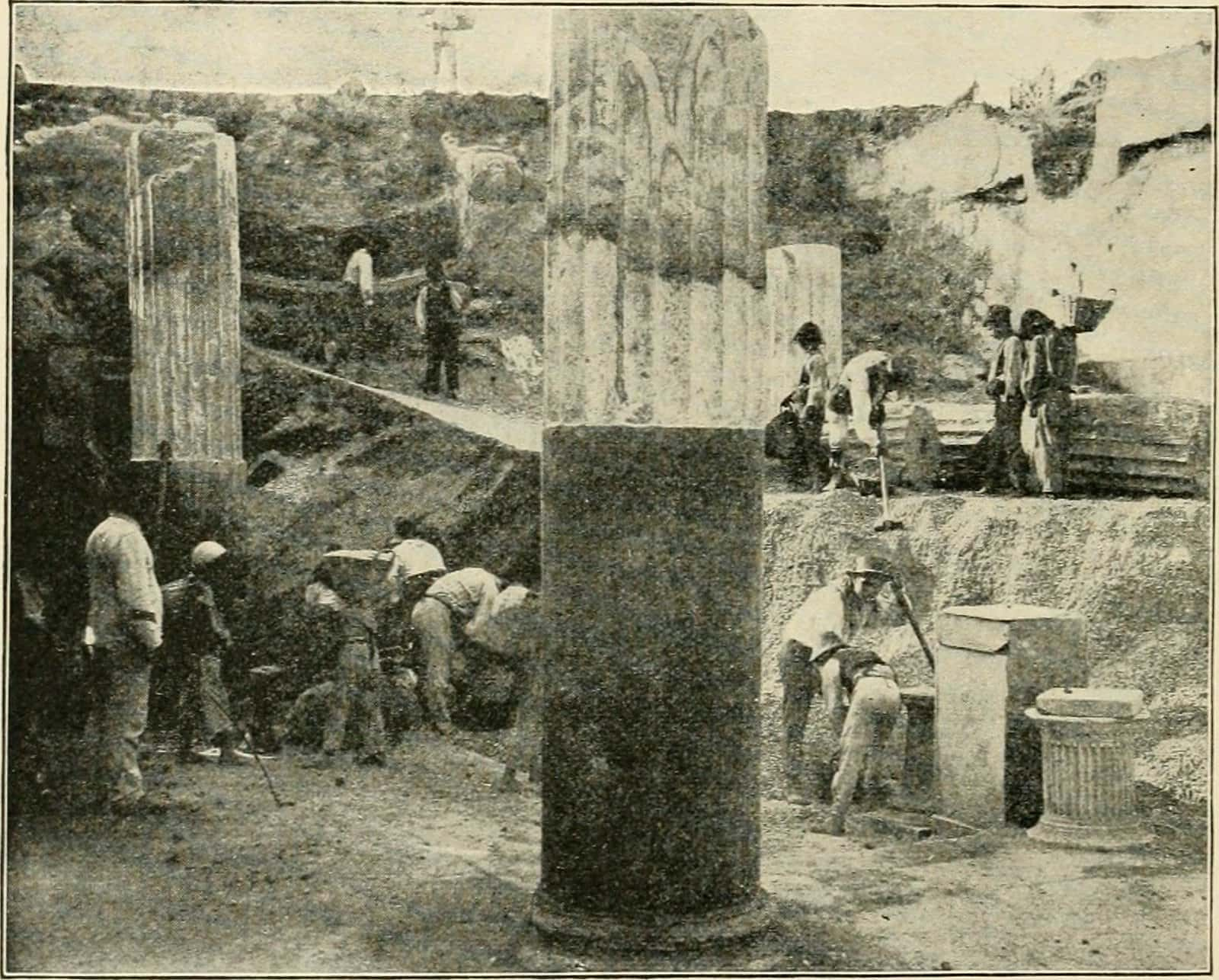 Flickr, Internet Archive Book Images
Flickr, Internet Archive Book Images
24. One Ancient Ampitheatre
The Amphitheatre of Pompeii is the oldest known stone amphitheatre in Italy and the Roman world. Built sometime after 70 BC, it was constructed at the private expenditure of two local officials, Quinctius Valgus and Marcius Porcius. The amphitheatre could seat about 20,000 people, and graffiti has revealed that gladiator games were extremely popular there. In 59 BC, there was a riot between the residents of Pompeii and the nearby town of Nuceria, which resulted in Emperor Nero banning games at the amphitheatre for an entire decade.
23. Ancient Graffiti
Graffiti and wall paintings found preserved in the ruins of Pompeii give the world a window into the thoughts and words of ancient Roman society. The writings ranged from private messages to election notices and public announcements.
22. Colorfully Decorated
The excavation of the amphitheatre in 1815 revealed an extraordinary series of mural paintings on the walls of the city's parapet. The paintings depicted scenes of wild animals, winged victories and spaces lit by candelabras. The murals were likely painted shortly before the eruption, and were sadly destroyed by frost shortly after being excavated. Luckily, drawings were made of the murals before that happened, so some record of what they looked like still exists.
21. First Discovery
The first, unofficial discovery of the Pompeii site occurred in 1599 purely by fluke. The architect Domenico Fontana visited the site when workers who were digging an underground channel to divert the river Sarno discovered the city. Fontana reportedly re-buried the site after discovering frescoes of a seemingly sexual nature, which were considered immoral at the time. The site wasn’t discovered again for another 150 years, when it was intentionally explored in 1748 after the discovery of treasure on Herculaneum’s site.
20. Surviving Frescos
More frescos (murals) were found on the estate of Julia Felix, and seemed to depict everyday life in the Forum—the city’s political centre. Twelve fragments of the frescoes survive today, including a depiction of a boy being whipped, and figures selling bread, fruits and vegetables. All the fragments show that the Forum was not only the political hub of the city, but the economic and social centre as well.
19. Older Occupants
Further study of Pompeii’s ruins has led archeologists to believe that the site was at one point occupied by Greeks. The oldest remains in the city are fragments of a Greek Doric Temple that dates back to 6th century BC, and the Greeks seem to have been the first group to erect identifiable buildings.
18. Never Rebuilt
After the eruption, no efforts were ever made to rebuild the city of Pompeii. The exact reason why is unknown, but it’s believed that the extensive damage and the tragic loss of so many lives were both so great that the survivors just never returned. One group who did return to the city were looters, who dug tunnels through the debris and made off with many of the city’s treasures.
17. Stronger Than a Bomb Blast
The eruption of Mount Vesuvius is estimated to have been 500 times more powerful than the atomic bombs that were dropped on Hiroshima and Nagasaki at the end of WWII. The cloud of tephra and gases that came from the volcano rose to a height of about 21 miles, and the eruption discharged 100,000 times the thermal energy of the two nuclear bombs.
16. Cult of Isis
The Cult of Isis was formed around the Egyptian goddess Isis and was extremely popular in Pompeii. The city had a famous temple dedicated to the goddess, and images and statuettes were found in houses along with the figurines of other Roman gods and goddesses. Roman writers were highly suspicious of the cult, believing that it endangered their traditional values like honor and duty. The temple had existed in Pompeii for at least 200 years before the city’s destruction, and attracted all varieties of people. While their exact rites and ceremonies are unknown, Isis was the patron goddess of sailors, which would have made her popular with residents of the seaside city.
15. No Dentists Required
Surprisingly enough, one of the discoveries that was made about the people of Pompeii was that they had seemingly perfect teeth. Thanks to modern technology, Italian scientists were able to use CT scans to make 3D models of the skeletons, and the majority had what has been described as “Hollywood teeth.” This was thanks in part to good diet, but was also likely a result of the high fluorine content around the volcano.
14. Most Famous but Not Most Deadly
In terms of deadly eruptions, Mount Vesuvius doesn’t even rank in the top five. There were 29,025 victims in the 1902 Mt. Pelee eruption in Martinique, and 25,000 in the eruption of Nevado del Ruiz in Colombia in 1985, and that's just in the 20th century. Mt. Vesuvis is, however, the most famous eruption in history, and has been a frequent subject in literature and movies since it occurred.
13. The Simpsons Did It
In the Italian Bob episode of The Simpsons, the characters take a tour of Italy in Mr. Burns’ car and visit some of the most famous sites in Italy, including the Roman Colosseum and the Roman Forum. When they visit Pompeii, they come across a cast of an Ancient Roman family who looks exactly like them, including a Roman Homer choking a Roman Bart.
 The Simpsons (1989– ), Twentieth Century Fox
The Simpsons (1989– ), Twentieth Century Fox
12. Villa of Mysteries
One of the most famous houses in Pompeii is a house called The Villa of Mysteries. The villa dates back to 2nd century BC, and appears to have been remodelled after the earthquake in 62 AD. The villa was excavated in 1909, and it is known for its collection of ancient Roman paintings. It sustained only minor damage in the eruption, and most of its frescoes were left intact. The subject of the frescoes is constantly under debate, but a common interpretation is that they depict a religious ritual, and are intended to be read as a single story.
11. First Phase of Exploration
The first phase of the exploration of Pompeii lasted for a century, and was periodically funded by the Bourbon regime. In 1748, Charles III, the Bourbon King of the Two Sicilies, directed the Spanish military engineer Colonel Roque de Alcubierre, who had already been digging in Herculaneum for 10 years, to recover art from the site of Pompeii. Digging up art became a trend for wealthy tourists, and it helped give rise to neo-classicism among the upper classes in Europe.
10. Restoring the City
Between 1863 and 1923, efforts to restore the buildings of Pompeii, and to discover its layout, took place. Architect Giuseppe Fiorelli was the director of the excavation until 1875, and he created a system for uncovering the houses from the top down. He also recorded the layout and form of the town, dividing it into regions. Reconstruction work continued into the 20th century, and many scholars visited the site to study the remains. One important visitor was August Mau, who in 1882, devised a system for categorizing the styles of recovered Ancient Roman paintings.
9. Third Phase
Modern excavation at Pompeii has been more targeted than the earlier efforts, and are an attempt to piece together a history of the city before its destruction. Even after hundreds of years of excavations and research, only about 2/3 of the city has been recovered.
8. Rich Resources
One benefit of earlier volcanic eruptions near Pompeii was that the soil was extremely rich in nutrients. This created some superior farmland, where the people could grow crops like grapes and olive trees.
7. A Morbid Nickname
Pompeii is sometimes referred to as “The City of the Dead,” so named because of the fact that so many of its inhabitants were killed by the volcanic eruption and remained there for centuries, buried under the ash. The 19th century novelist Sir Walter Scott first used the term to describe the city when he visited the site and carried out excavations.
6. World Heritage Site
In 1997, Pompeii was declared a World Heritage Site by UNESCO. The site is visited annually by 2.5 million people, and many of the historic sites and buildings are available for exploration.
5. Fancy Faun House
The House of Faun was a great complex with multiple areas serving different purposes. The owner’s identity is unknown, but whoever it was would likely have been a member of the ruling class. The house was named for the bronze statue of a dancing faun found in the center of one of its main halls. Archaeologists have also determined that the residence itself was connected to something like a mall, where traders could have rented shops. The structure takes up an entire city block, has 2 main rooms, four dining rooms and two gardens, and the walls were finely painted in different artistic styles.
4. House of Ill Repute
The excavations at Pompeii have revealed at least 25 buildings that were used for prostitution. The majority of them only had a single room, but the building known as lupanar was larger and quite organized. The building has two levels with five rooms on each, and is decorated with erotic paintings. Archaeologists believe that the women who worked their were Greek and Oriental slaves, and the building was probably a brothel from the start.
3. Take Me Into Your Loving Arms
Excavators in Pompeii discovered two bodies that were wrapped in a tender embrace as they were covered by layers of rock and ash. The bodies were originally called “The Two Maidens,” but in April 2017, scientists discovered they were actually men. This discovery has led scientists to wonder whether or not the two men were lovers. Anthropological tests have revealed that the men were around 18 and 20 years old, but the exact nature of their relationship will never be known.
2. Blowing the Wrong Way
Wind direction was a big factor in the destruction of Pompeii. Had the wind been blowing from the southwest as usual, most of the pumice and ash would have been blown away from the city. Tragically, on the day of the eruption, the wind was blowing in a northwesterly direction, which blew the debris directly over Pompeii.
1. Eyewitness Account
To this date, only one eyewitness account of the eruption exists. Pliny the Younger was a Roman administrator and poet who witnessed the eruption from a distance, and later questioned survivors. He described the event in letters to his friend Tacitus, and the letters were discovered in the 16th century. As he wrote, “In the darkness you could hear the crying of women, the wailing of infants, and the shouting of men. Some prayed for help. Others wished for death. But still more imagined that there were no Gods left, and that the universe was plunged into eternal darkness.” Pliny the Younger's uncle, the famous scholar Pliny the Elder, also died while attempting to rescue family members from the eruption.
Sources: 1, 2, 3, 4, 5, 6, 7, 8, 9, 10, 11, 12, 13, 14, 15, 16, 17, 18, 19, 20, 21, 22, 23, 24


